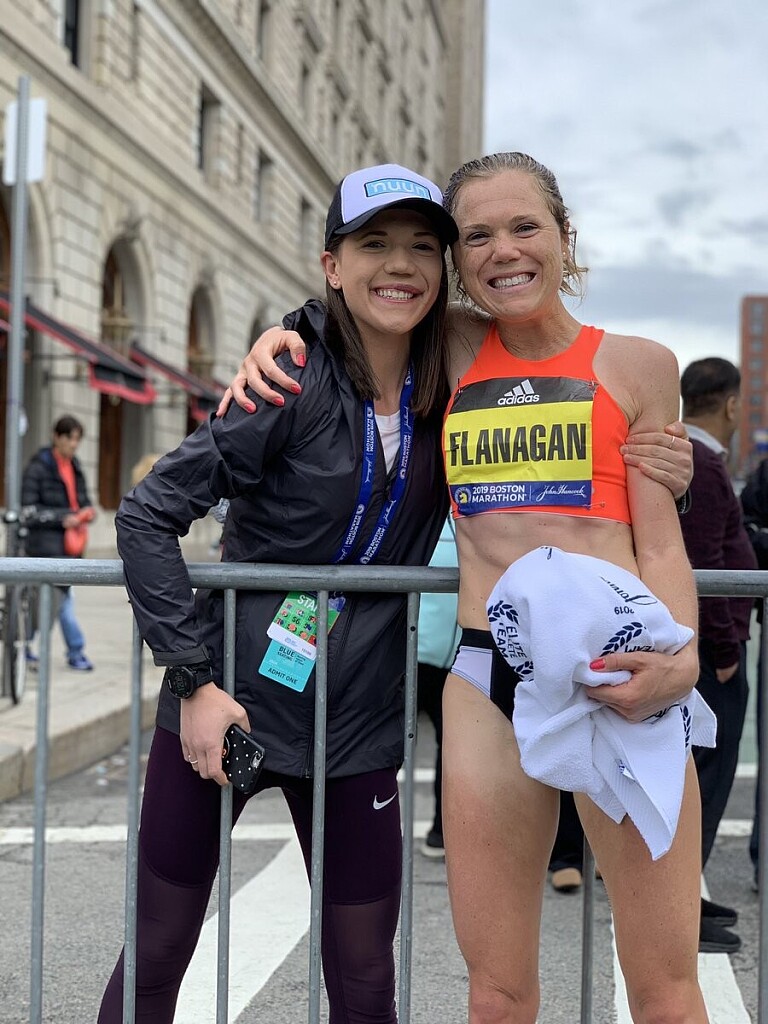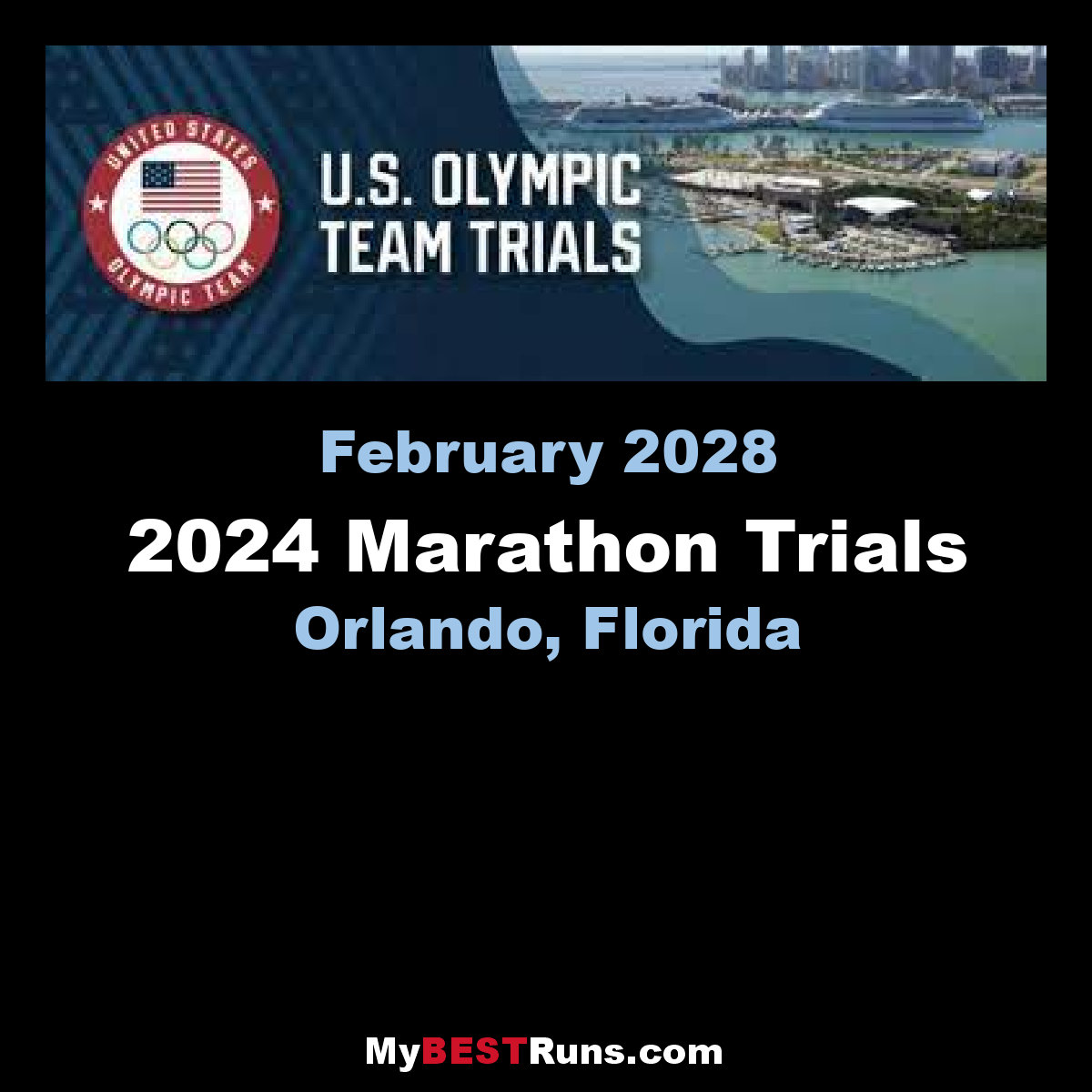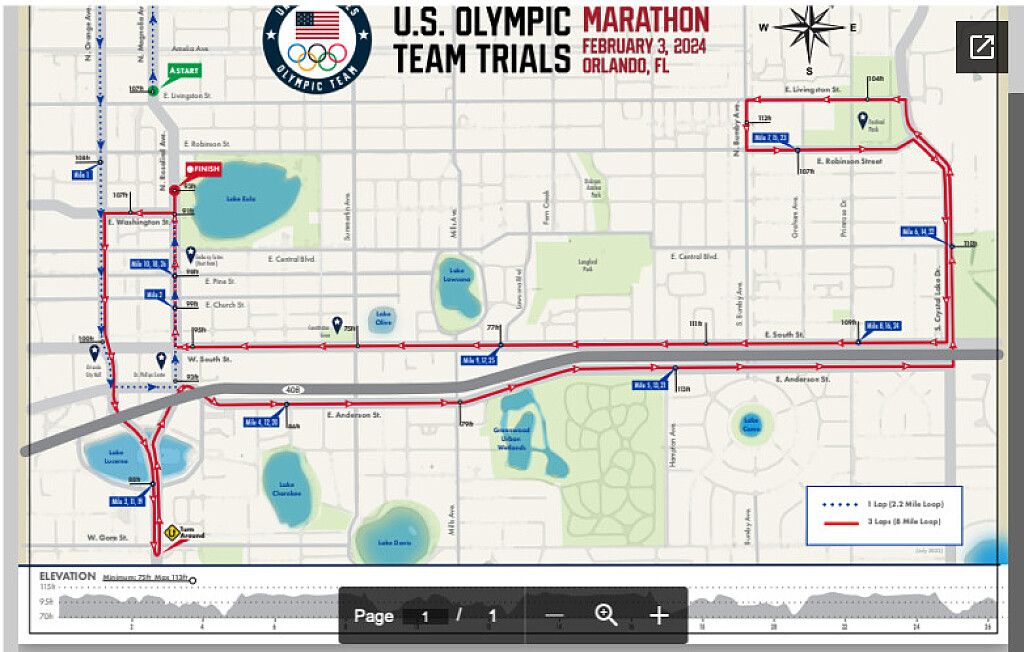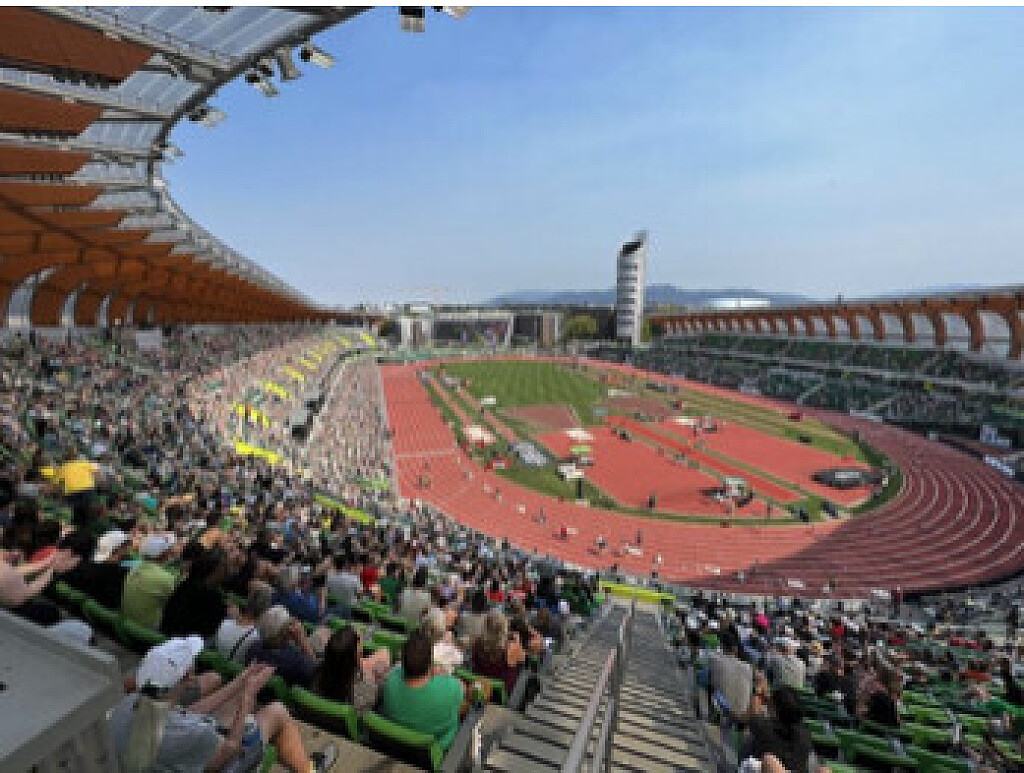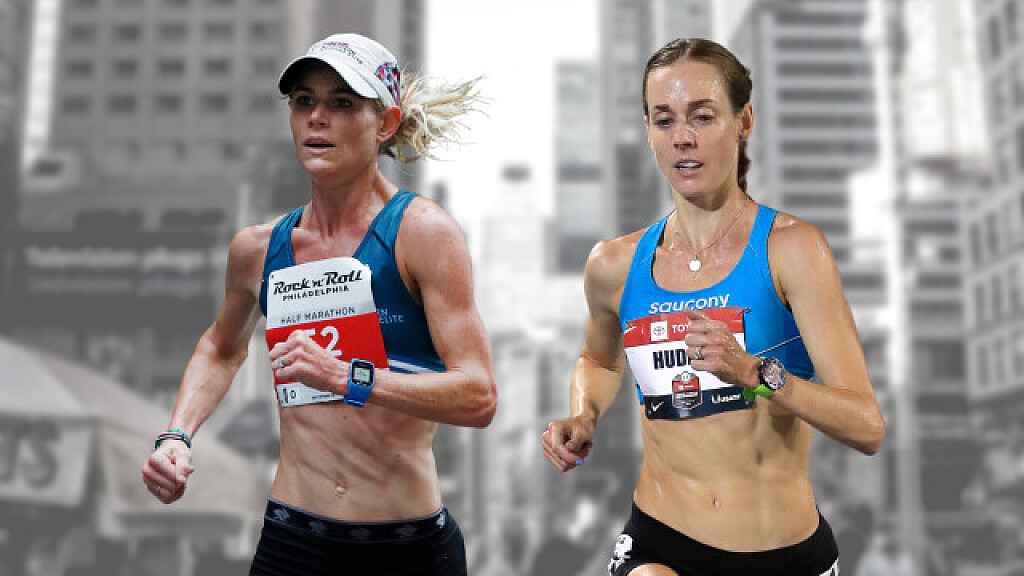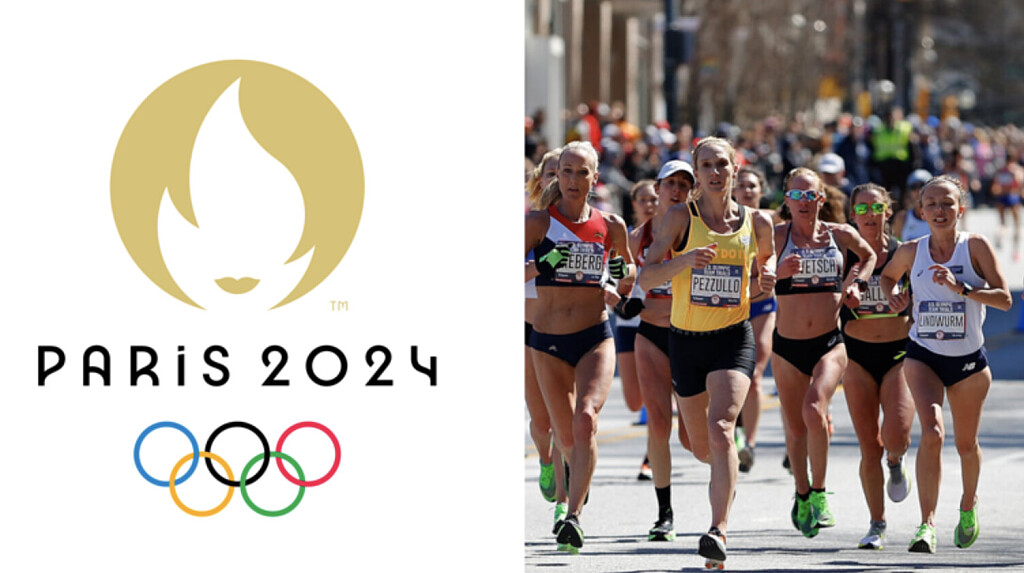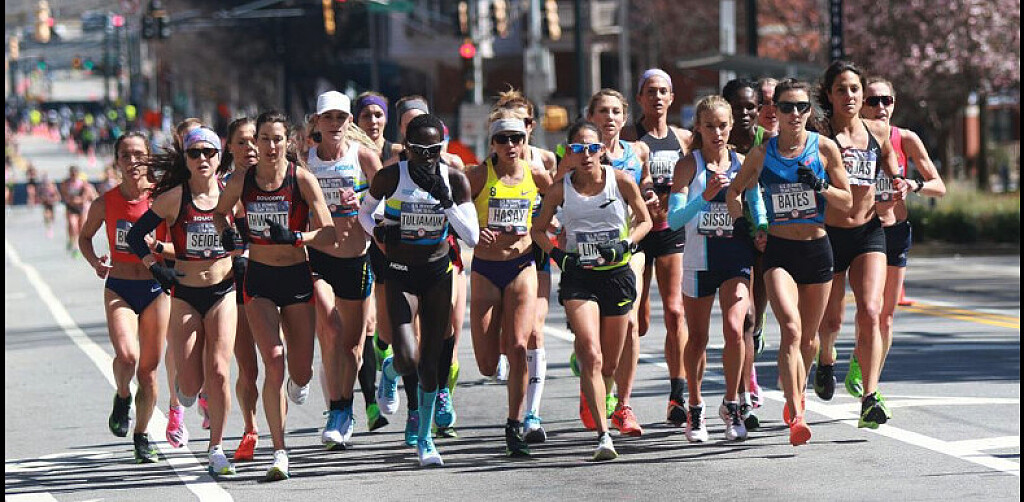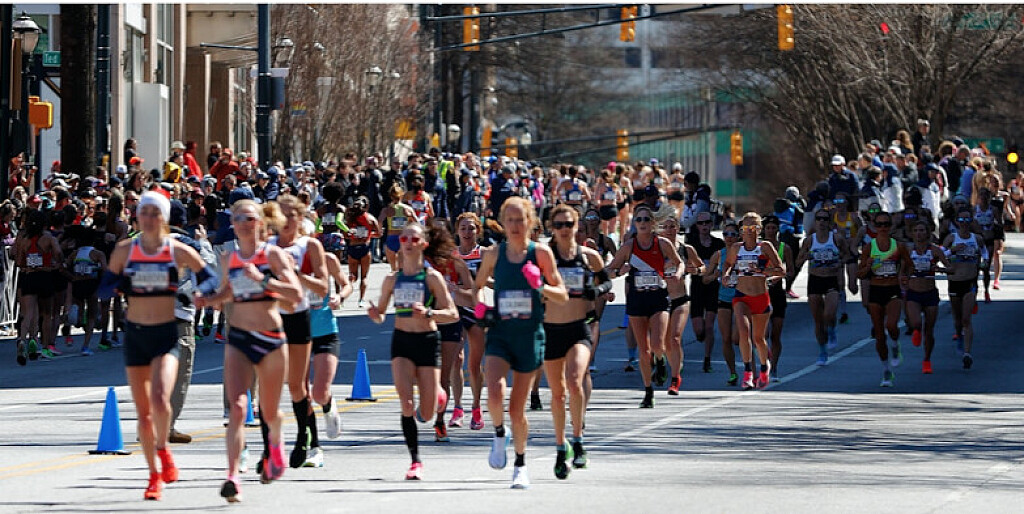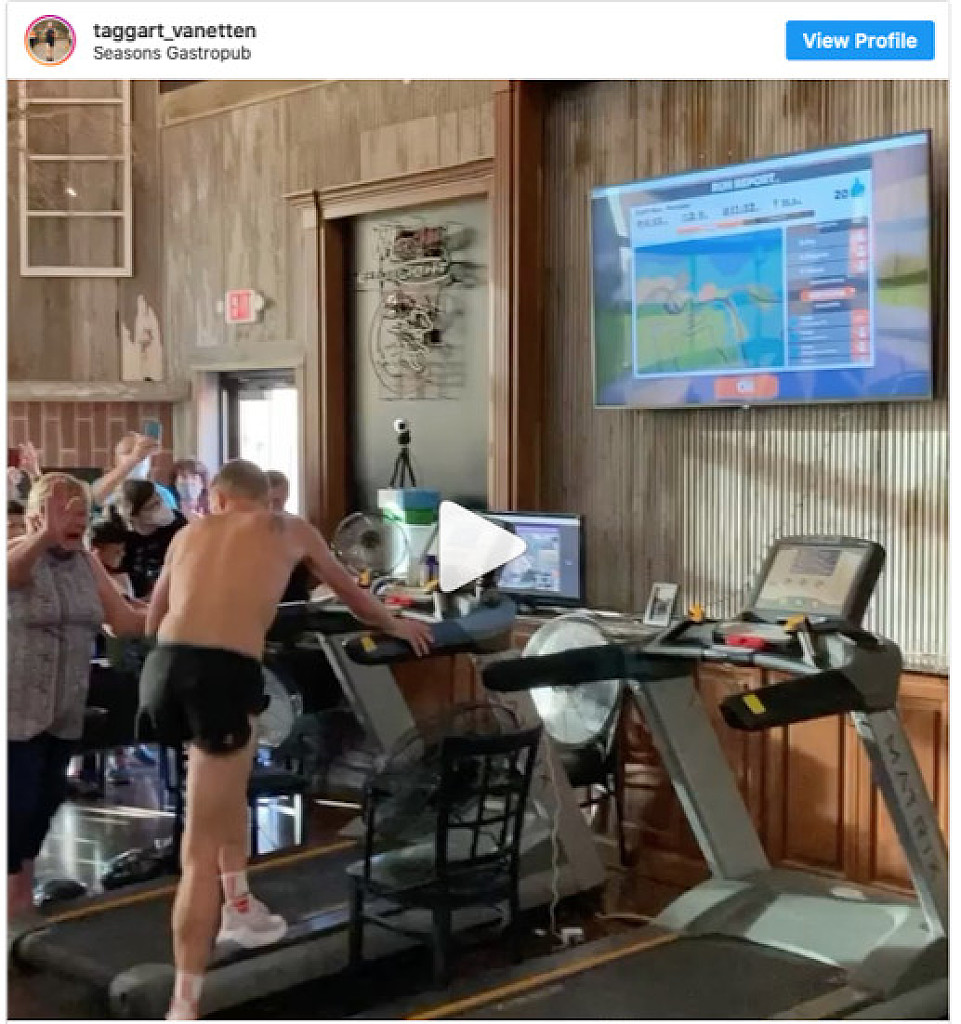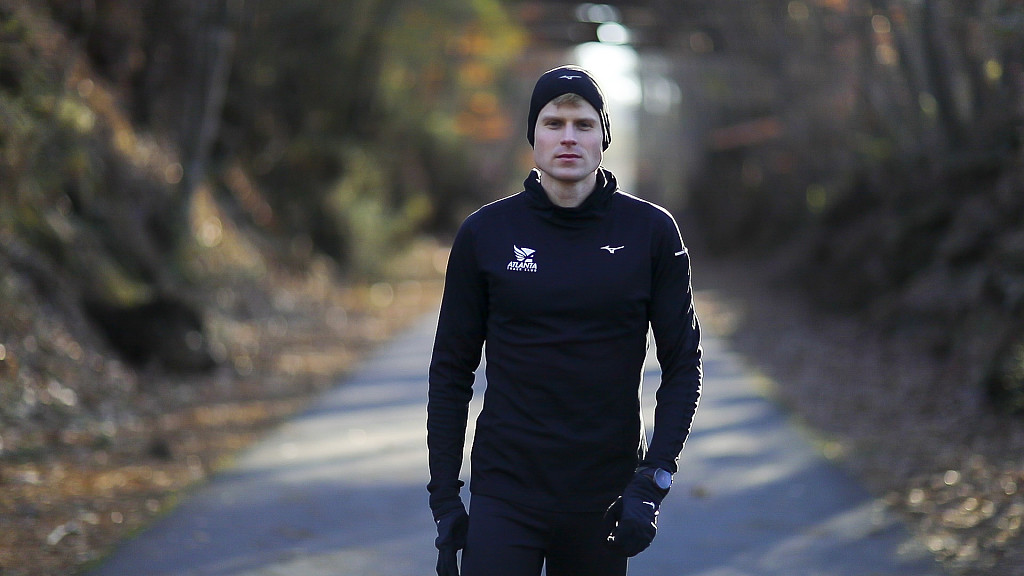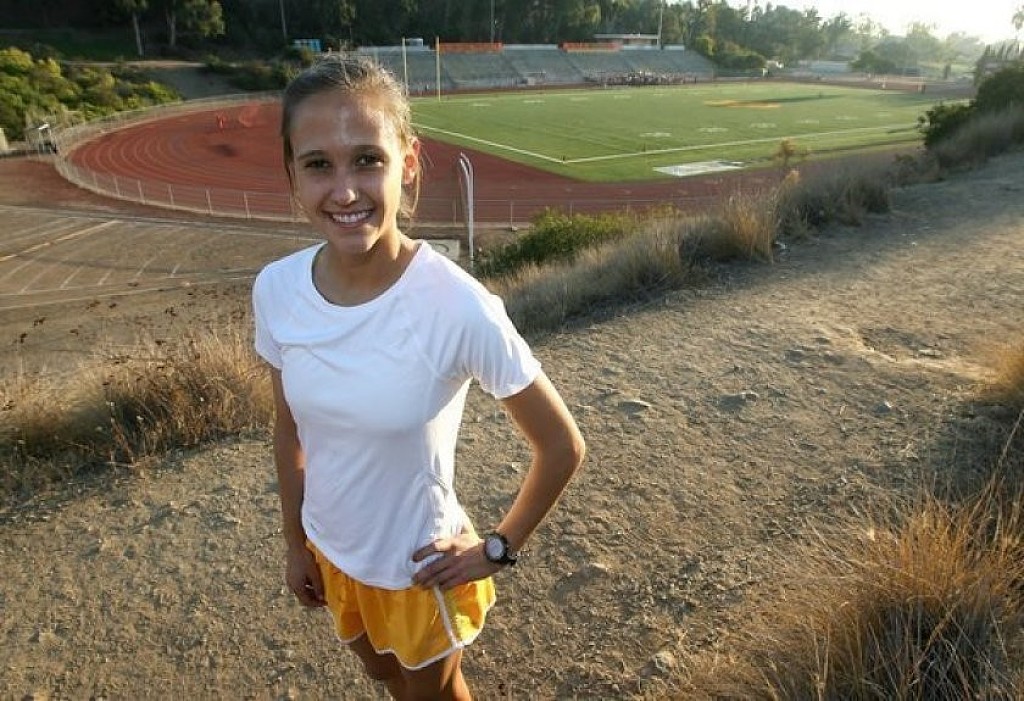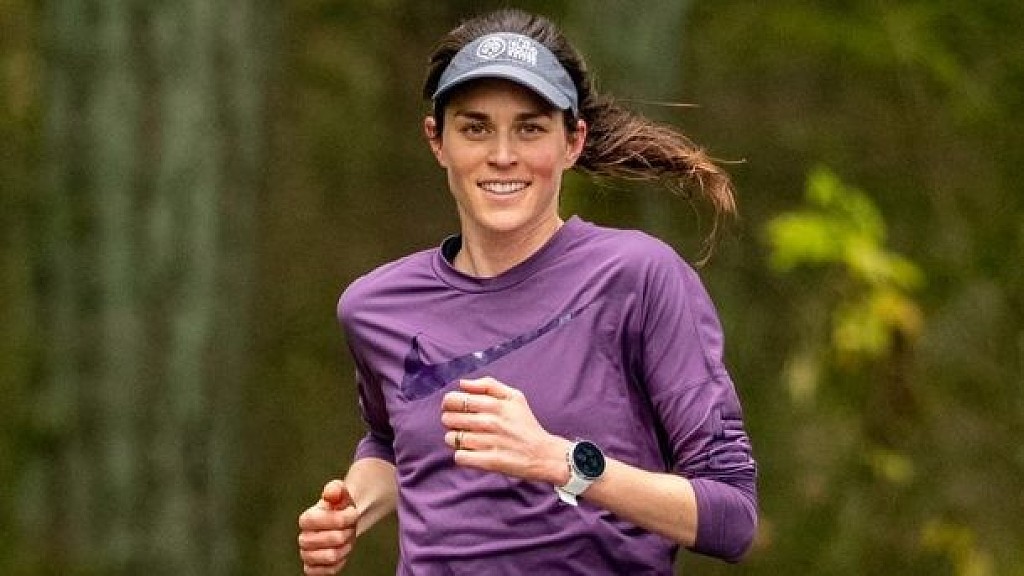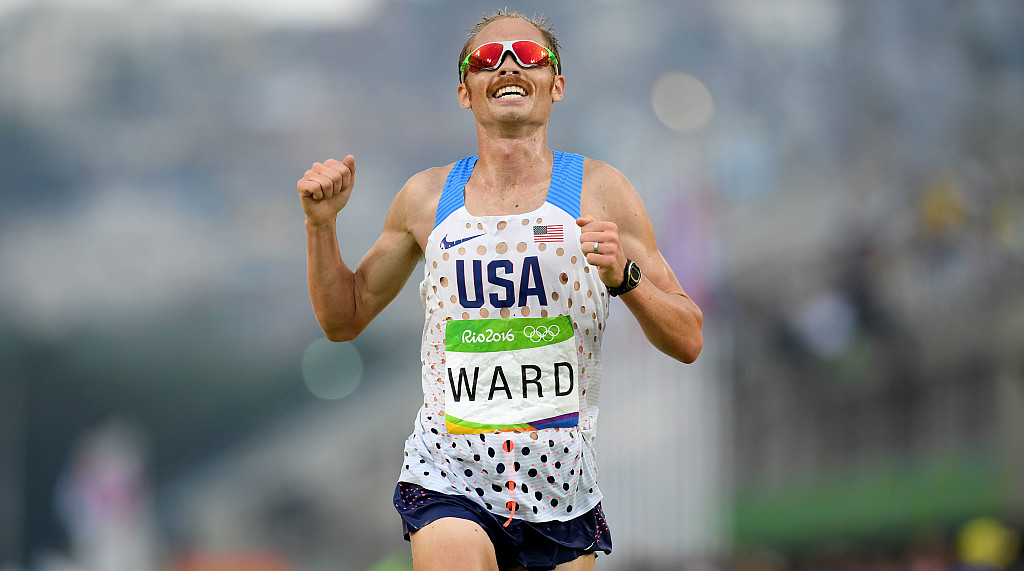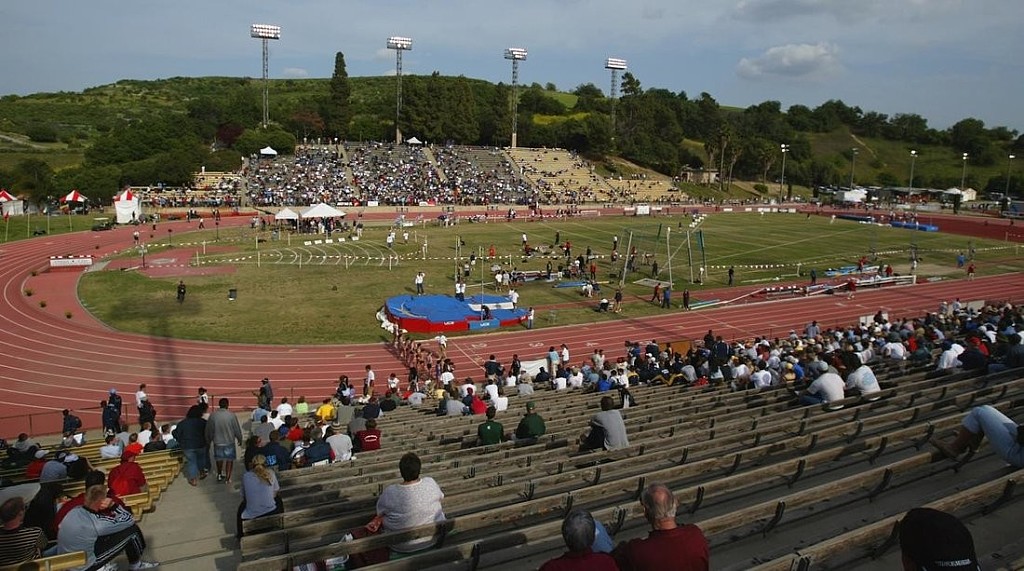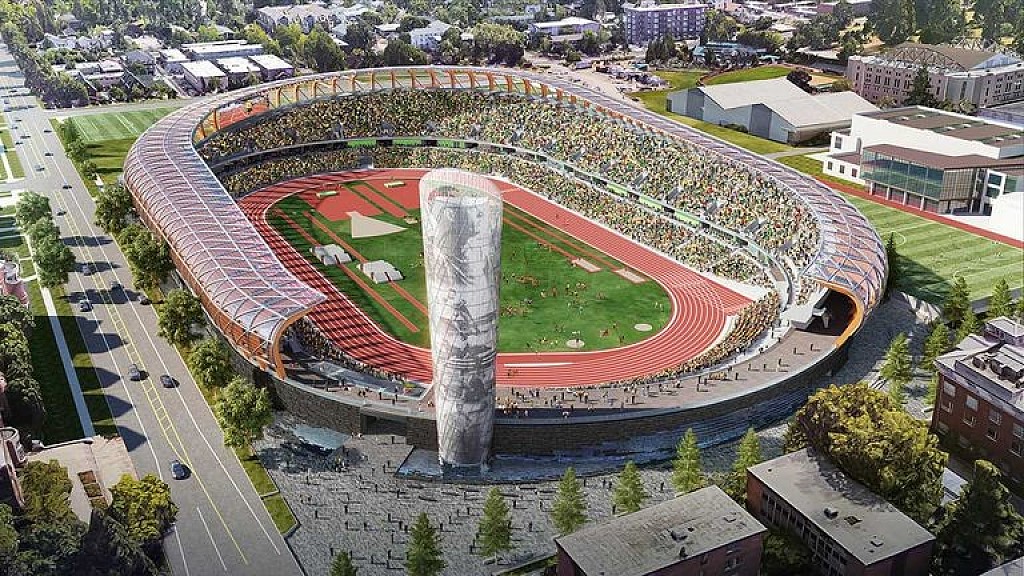Running News Daily
Running News Daily is edited by Bob Anderson. Send your news items to bob@mybestruns.com Advertising opportunities available. Train the Kenyan Way at KATA Kenya and Portugal owned and operated by Bob Anderson. Be sure to catch our movie A Long Run the movie KATA Running Camps and KATA Potato Farms - 31 now open in Kenya! https://kata.ke/
Index to Daily Posts · Sign Up For Updates · Run The World Feed
Articles tagged #2020 Trials
Today's Running News
Lindsay Flanagan And Her Younger Sister Kaylee Are Both Racing The Marathon Trials
In the past 20 months, veteran marathoner Lindsay Flanagan has cut her personal best by 2 minutes, twice. She won the 2022 Gold Coast Marathon in Australia in a course record of 2:24:43. In August, her 2:27:47 run placed her ninth overall, and first American, at the World Championships marathon in Budapest.
But one of her proudest moments came in the wee hours of December 3. Huddled over her phone in Adelaide, Australia—where she’d traveled for a few months to prepare for the upcoming Olympic Marathon Trials—Flanagan repeatedly refreshed the results of the California International Marathon.
Not long after 4 a.m. Lindsay’s time, her younger sister, Kaylee, crossed the finish line in 2:35:24—a nearly five-minute PR and her first Trials qualifying time. “I did not sleep at all that night,” Lindsay said. As both Kaylee’s sibling and her coach, “I was so invested.”
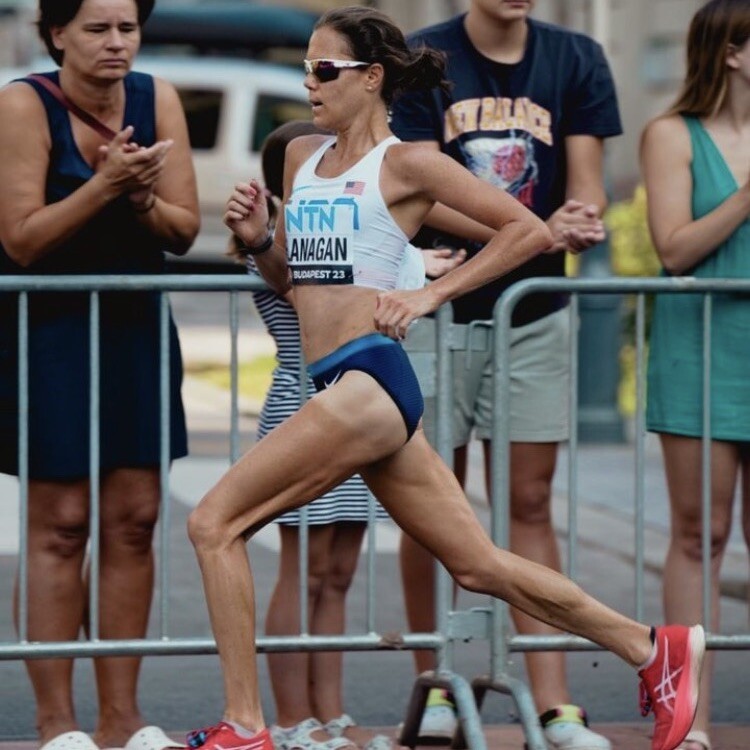
After promising high school running careers in Illinois, both Flanagans (no relation to Shalane) ran at the University of Washington, overlapping for a year. Now, they live across the street from each other in Boulder, Colorado, where they typically share miles at least once if not twice daily. Kaylee cheered Lindsay on in Budapest; afterward, they vacationed in Croatia.
They’ve spent the past few months, uncharacteristically, half a world apart, though Kaylee frequently pops by Lindsay’s house to water plants and make sure the pipes don’t freeze. But they’re reuniting in Florida, lining up together at the Trials.
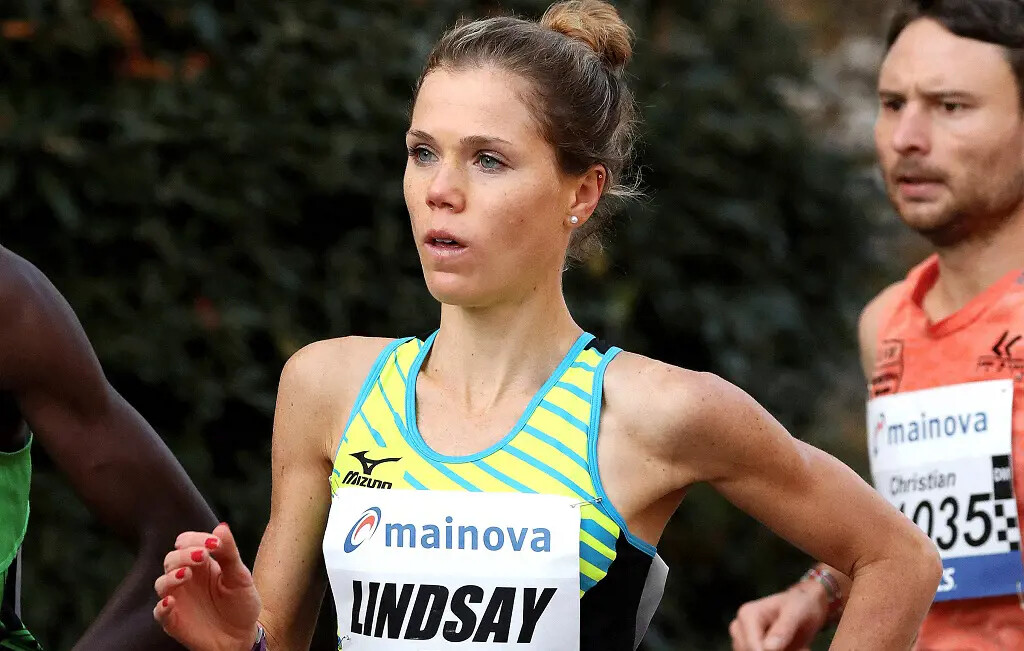
The Flanagans aren’t the only siblings competing in Orlando on February 3; the field also includes brother and sister Kaylee and Austin Bogina and twins Isabel and Monica Hebner. But they’re unique in also being athlete and coach—Lindsay has guided Kaylee’s training for about two years.
And in her third Trials, Lindsay stands out as a top, if under-the-radar, pick to make the U.S. Team.
The Asics-sponsored runner, 33, does most of her workouts alone. Her coach is remote, and she has no training group or partner capturing evidence for Instagram. Yet out of the limelight, Lindsay has spent nearly a decade preparing for a moment just like this one. “Every workout, every season, every race cycle has been meticulously chosen,” Kaylee, 28, said of her sister. “Trust me, she will be one to watch out for in Orlando.”
A steady ascent
As close as they are, the two sisters forged different paths from college to the Trials. Lindsay made her marathon debut the January after graduating. At the 2015 Houston Marathon, she ran 2:33:12, good for ninth place and a slot in the 2016 Trials. On a hot day in Los Angeles the following February, she paused to vomit around the 21-mile mark, then finished 14th in 2:39:42.
Through 20-some marathons since—so many she’s lost count—she’s gradually, if quietly, established herself. Her next breakthrough came at the 2016 Frankfurt Marathon, where she finished fourth in 2:29:28. She notched top-10 finishes in Boston and Chicago in 2019, and headed into the 2020 Trials ranked 12th. That’s exactly where she finished, running 2:32:05.
Post-pandemic, she was coaching herself but seeking mentorship. Her agent connected her with Benita Willis, a four-time Olympian for Australia and gold medalist at the 2004 World Cross Country Championships. After an hour-long conversation, Lindsay realized she wanted Willis to fully take the reins of her training.
The pair became fast friends, and under Willis’s guidance, Lindsay is now even faster. She first lowered her personal best to 2:26:54 in April 2022 at the Paris Marathon. Next, Willis suggested Lindsay make her first Australian trip to run Gold Coast in July.
The race would give the pair the chance to meet in person for the first time, and with her victory, Lindsay had an opportunity that her coach, a 2:22:36 marathoner, had missed. “I ran big races, but I never won a marathon or broke a course record,” Willis said. “I wanted Lindsay to have that sort of experience well before the Olympic Trials.”
by Cindy Kuzma
Login to leave a comment
2028 US Olympic Trials Marathon
Most countries around the world use a selection committee to choose their Olympic Team Members, but not the USA. Prior to 1968, a series of races were used to select the USA Olympic Marathon team, but beginning in 1968 the format was changed to a single race on a single day with the top three finishers selected to be part...
more...Orlando Unveils 2024 US Olympic Marathon Trials Course, Announces Races Will Start at 12:10 and 12:20 pm ET
Just over six months out from race day, organizers revealed the course for the 2024 U.S. Olympic Team Trials – Marathon on Tuesday morning. The race, which will be held on February 3, 2024, in Orlando, Fla., will consist of one 2.2-mile loop through the downtown business district and three 8-mile loops through the city’s Milk District — so-called because it features the headquarters of T.G. Lee Dairy, which has been based in the area for 98 years. It will start and finish at the Walt Disney Amphitheater at Lake Eola Park. None of the course will run through Disney World, which is located to the southeast of the city of Orlando.
Unlike the Paris Olympic marathon course, which features considerable climbing and descending during the middle of the race, the Orlando course is relatively flat, with few small inclines but a variation of just 38 feet (11.6 meters) between the course’s lowest and highest points.
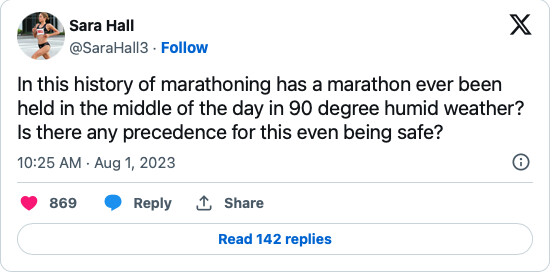
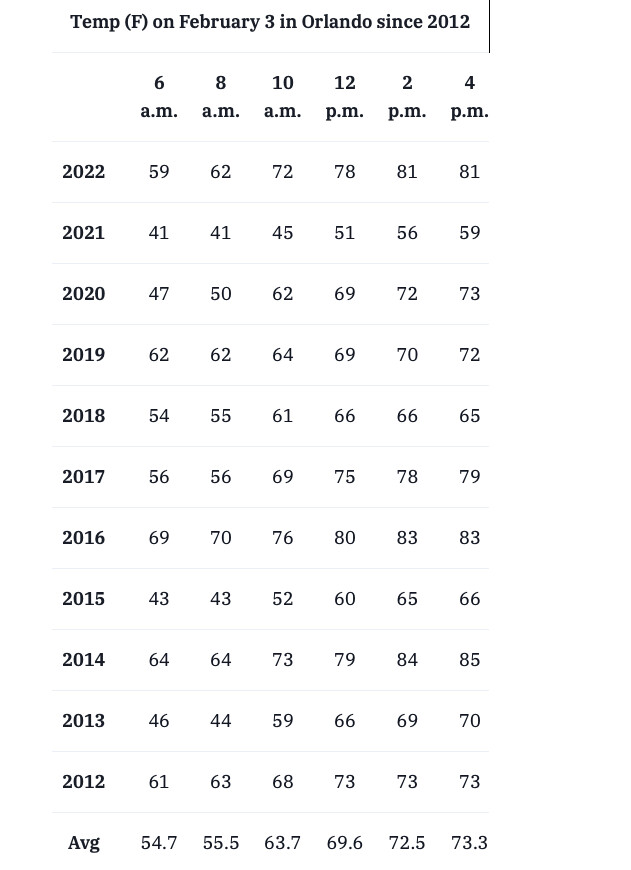
Mid-Day Start Time
Getting the actual course layout is nice but not that significant. We knew the course was going to be mostly flat as Orlando is mostly flat.
Organizers also announced something more significant: the start times for the race. The men will begin at 12:10 p.m. ET with the women to follow at 12:20 p.m. ET. Both races will be shown in their entirety on NBC.
With basically a noon start in Florida, it’s possible the race could be run in quite warm conditions. The debate of the once-rumored but now confirmed 12ish start times has been intense on the LRC forums for over a month now.
A couple of Trials veterans have already shared their thoughts, with Sara Halland Des Linden offering contrasting viewpoints. Hall, who is known to not like racing in hot weather, expressed concern about the heat and the safety of the athletes. She even challenged USATF CEO Max Siegel to run a hot weather marathon this summer.
It must be noted that Orlando has not seen a 90-degree day in February since 1962.
Meanwhile, two-time Olympian Linden had no issue with the start time and thought it could boost her chances of making the team by running smart.
For those interested in what the weather is typically like in Orlando on February 3, here’s a look at the temperature, wind, and dew point at specific times from 2012-22.
If the goal of the Olympic Marathon Trials was for every athlete to run their fastest possible race, obviously it would be better to start the race earlier, but there are other concerns. Television is the reason why the race is being held in the afternoon (there’s not a huge amount of West Coasters watching TV at 5 or 6 a.m. on a Saturday). The 2016 Trials began at 1:06 p.m. ET (10:06 a.m. local in Los Angeles) while the 2020 Trials in Atlanta began at 12:08 p.m. ET. Both races were shown on NBC in their entirety.
The fact is, in professional sports, there are often competing interests — what’s best for the athletes isn’t always what’s best for TV, and someone is going to be unhappy. USATF designed its US championships schedule this year with athletes in mind but the result was that USATF could not get the US outdoor championships shown on NBC. With the Trials, USATF is prioritizing the broadcast on NBC with the athletes a secondary consideration. You can be mad about one of those two things, but not both.
Orlando can be warm in February, no doubt about it — from 2012-22, the average temperature at 2 p.m. on February 3 was 73 degrees. But guess which race also is warm? The Olympic marathon. The Olympic marathons will be held on July 10-11, 2024. On July 10-11 this year, it was 73 degreees at 10 a.m. in Paris, which is when the marathons would be nearing their completion (8 a.m. start times).
In general, we are for athletics to be on live TV so we are fine with the races being scheduled for 12:10 and 12:20. We do believe if the temperatures are truly extreme (say 75 or higher at the start, certainly 80), USATF should move the race up and show it on tape-delay. But if you’re looking for conditions that mirror the Olympic marathon, Orlando in February is not a bad facsimile.
The one big issue we still have is with the new Olympic qualifying system. If you haven’t run under 2:11:30 for the men or 2:29:30 for the women during the qualifying window, you aren’t going to the Olympics even if you are in the top three. We think that’s ridiculous but those are the rules. That’s tough to do in warm weather. While it’s very unlikely someone who hasn’t run at least 2:11:30 or 2:29:30 in the window finishes top three, it could happen in the case of someone just moving up the marathon like Molly Seidel did in 2020 or someone coming back from injury or maternity leave like Kellyn Taylor.
We really wish WA would simply accept the top three from the Trials since the US is sending three per gender most likely no matter what happens, but we’d rather take the small risk that someone without the 2:11:30/2:29:30 times is top three and have the race be on live TV than put it early in the morning. Plus athletes could chase the time up until April 30 and we’d love to see WA have to take the PR hit of someone on the way back from maternity leave having to run a time. Maybe it would finally make them let the spots go to countries as long as the countries hold legitimate trials.
(To cover all our bases, it’s worth noting there’s a small chance on the men’s side that the US has only one or two qualified men’s athletes at the start of the Trials. We’re pretty sure we’ll have at least three but it’s not set in stone and we won’t know for sure until after the fall marathon season is over. If that’s the case, then the start time is more problematic as the US men would either have to hit the 2:08:10 auto standard or run fast enough to raise their world ranking into a qualification spot. If that’s the case and the US men don’t have three spots guaranteed, we think the men’s start time should be moved up and shown on tape delay but keep the women’s race as scheduled).
Talk about the trials on our forum:
by Let’s Run
Login to leave a comment
Eugene Will Host 2024 US Olympic Track & Field Trials, Again
The next US Olympic Track and Field Trials will be held in ….. Eugene, yet again.
Yes that’s right. Hayward Field will host the 2024 US Olympic Team Trials – Track & Field from June 21-30, 2024, USATF announced in a statement on Thursday. The Olympic track & field program will begin four weeks later, on August 1 in Paris.
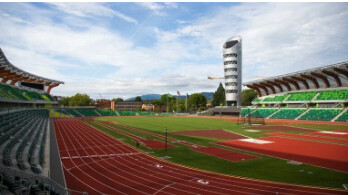
2024 will be the fifth straight Olympic Trials hosted by Eugene (2008, 2012, 2016, 2021, 2024) and Eugene’s fourth straight USATF Outdoor Championship. Since the new Hayward Field opened in 2020, no other stadium has hosted the US championships.
That means that in 2024 — just as in 2015, 2016, 2021, and 2022 — the three biggest meets in American track & field will be held at Hayward Field: the Prefontaine Classic, the NCAA championships, and the USATF championships/Olympic Trials. Here is what the schedule will look like for 2024:
May 25: Prefontaine ClassicJune 5-8: NCAA championshipsJune 21-30: US Olympic Trials
Quick Take: Eugene does a fantastic job hosting big meets, but it’s time to give someone else a chance to host the Olympic Trials
Let’s make a few things clear. The new Hayward Field is the best track & field stadium in the country, and Eugene has a terrific local organizing committee in TrackTown USA that knows how to stage big meets. The 2024 Olympic Trials are going to be terrific — they always are.
When you’ve got a beautiful new stadium like Hayward Field, you don’t want it to go to waste. But from 2021-2024, almost every major track meet in the US will have been staged at Hayward Field. The three most important track meets in the US are the Prefontaine Classic (the US’s only Diamond League), the NCAA championships, and the USATF championships/Olympic Trials. During a four-year period, 11 of those 12 meets will have been hosted in Eugene. And that does not even include the biggest meet Eugene has ever hosted — the 2022 World Championships.
That’s a recipe for major Eugene fatigue.
The Prefontaine Classic obviously isn’t moving out of Eugene, and the NCAAs are locked into Eugene through 2027. But it’s a missed opportunity to hold USAs in Eugene every single year, particularly the Olympic Trials. There are a limited number of diehard track fans in the US, and any diehard who has wanted to visit the new Hayward Field has probably done it at this point. If a husband and wife are huge track fans and they already figured out a way to take their kids to Eugene for Worlds, are they really going to want to go back again to the same location for the Trials?
The Olympic Trials should be in Eugene at most once every eight years. The last two normal* Trials drew more than 20,000 fans per day (21,644 in 2012; 22,1222 in 2016) but it’s foolish to suggest that the Trials can only do those sort of numbers in Eugene.
*Due to the COVID-19 pandemic, there was ticketing uncertainty about the 2021 Trials until the very last minute, which meant attendance numbers were a fraction of previous years
In the United States, when you throw the word Olympic in front of anything, people go crazy. And the last few US championships has shown that the built-in track fanbase in Eugene — the diehards who will go to every meet — has dwindled significantly.
We’re confident that if you staged the Olympic Trials in Austin, Des Moines, Omaha, Sacramento, or Mt. SAC, you’d draw big crowds. The Olympic Trials will do well anywhere they are held.
The question then, is why isn’t this happening?
“We all know that getting [to Eugene], it’s trying,” said Will Leer, chair of the USATF Athlete Advisory Committee, when LetsRun asked him about this at USAs in July. “Small airport, it’s expensive, hotels are minimal. But the process by which championships are awarded is through a bid. That much is well-known throughout all of USATF. And time and time again, TrackTown comes to the table with the best bid.”
Eugene certainly has a lot to offer, but we also don’t how much competition there is to host these events. It’s not as simple as USATF just awarding the Trials to a different city. A potential Trials host needs a world-class track facility and a local organizing committee interested in bidding for the Trials, which requires dollars.
Sarah Lorge Butler reports that Eugene paid at least $3 million to host the 2020 Trials, writing, “TrackTown paid a nonrefundable rights fee of $500,000 and the total prize purse of $1.4 million. They also had obligations to provide $1.1 million for athlete support during the meet, to be used at USATF’s sole discre
It’s an expensive undertaking for any local organizing committee. We know Eugene has the dollars. It’s unclear whether anyone else does (If you know of any other city that bid for the Trials, please email us at letsrun@letsrun.com)
If it’s simply a matter of USATF needing to find $3 million to put on the Trials, we know where they could find it. USATF head Max Siegel was paid a ridiculous $3.8 million in compensation in 2021; reduce that to a more reasonable $800k and you could hold the Trials wherever you wanted without any financial impact on USATF.
by Let’s Run
Login to leave a comment
Americans Kellyn Taylor and Molly Huddle Are Ready to Race the New York City Marathon
The women's professional lineup for the 2023 New York City Marathon on November 5 packs a wallop. Barring any late withdrawals, we can look forward to a showdown among a defending champion, an Olympic champion, a former marathon world record holder, the current half marathon world record holder, and the 2023 Boston Marathon champion.
While fast times aren't usually the main objective in New York, a race that traditionally favors tactics and competition over pace on an undulating 26.2-miles through the city's five boroughs, we just may see the course record--2:22:31, set all the way back in 2003--go down.
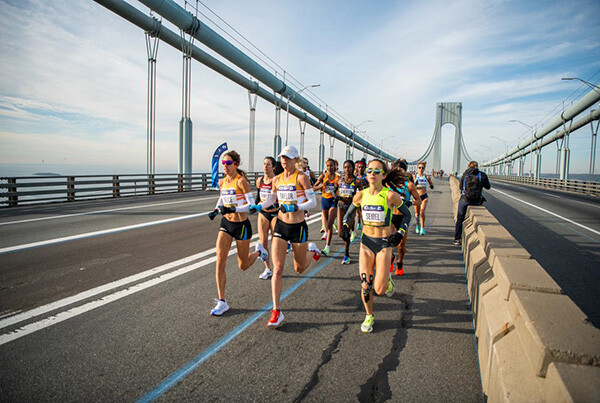
Last year's surprise winner Sharon Lokedi of Kenya is returning to defend her title. The 2022 race was her debut at the distance and she aced her first test in 2:23:23, though since then, she's coped with a foot injury that kept her out of the Boston Marathon in April. Hellen Obiri, also of Kenya, is back, too--her first attempt at the marathon was also last year in New York, finishing sixth (2:25:49). Obiri went on to win the 2023 Boston Marathon in April, lowering her personal best to 2:21:38.
Kenyan Brigid Kosgei, who broke the marathon world record in 2019, finishing Chicago in 2:14:04 (since bettered in September at the Berlin Marathon by Ethiopian Tigst Assefa in 2:11:53) is also returning from injury after dropping out of the 2023 London Marathon in the first mile.
Joining these top contenders are 2021 Olympic marathon champion Peres Jepchirchir, also of Kenya, who won the 2021 New York City and 2022 Boston marathons and owns a 2:17:16 personal best, and Ethiopia's Letesenbet Gidey, the 2022 world champion in the 10,000 meters, ran the fastest marathon debut in history at the 2022 Valencia Marathon with a 2:16:49 effort.
The American women's field this year is small, because most athletes opted for earlier fall races, like the Chicago Marathon, to allow for more recovery time before training begins for the U.S. Olympic Trials, scheduled for February 3, 2024, in Orlando, Florida. But Molly Huddle and Kellyn Taylor are each making their return to the distance on Sunday after giving birth to their daughters in 2022--Huddle welcomed Josephine in April and Taylor welcomed Keagan in December (in addition to their eldest daughter, who is 13 years old, the Taylor family adopted a five-year-old son and almost-two-year-old daughter, growing the family to four children in the past 13 months).
Huddle, 39, and Taylor, 37, both said it was important to them to get in a healthy marathon training cycle and race experience prior to the U.S. Olympic Trials, to get back in the routine and fitness they'll utilize in preparation for 2024.
"Obviously you want to be able to finish 26.2 miles and have that fresh in your mind, but also the buildup, the marathon work--I've gotten pretty far away from that just with the pregnancy and postpartum," said Huddle, a two-time Olympian in the 5,000 and 10,000 meters, who placed third at the 2016 New York City Marathon (2:28:13) in her debut at the distance. "This is supposed to be a building block toward the workload that you need for the Trials--I'm going to have to try and inch my way back a little closer to what I'd ideally do for a marathon buildup."
Huddle hasn't started a marathon since the 2020 Trials in Atlanta, which she dropped out of at the 21-mile mark. She hasn't finished a marathon since April 2019, when she lowered her personal best to 2:26:33 with a 12th-place finish at the London Marathon. However, she did run two relatively fast half marathons this year, including a fifth-place, 1:10:01 effort at the Houston Half Marathon in January.
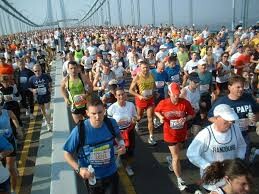
Taylor's last marathon was two years ago in New York, where she placed sixth in 2:26:10. In September, she finished seventh in the U.S. 20K Championships in New Haven, Connecticut, in 1:08:04.
Going into the 2023 New York City Marathon, here's what the two top Americans had to say as they reflected on their postpartum experiences and goals for their first 26.2-mile race back:
They would have preferred to race the Chicago Marathon because of the timing.
Huddle, who is the former American record holder in the half marathon, 5,000 meters, and 10,000 meters, was hoping to make her postpartum comeback on a flatter, faster course like the October 8 Chicago Marathon, which would have also afforded an additional three weeks of time until the U.S. Olympic Trials. Taylor, who placed eighth at the 2020 Trials in Atlanta and owns three top-10 finishes in New York, agreed that Chicago's timing would've been more ideal. Neither of them were accepted into the professional field, however.
"We birthed humans. We were still running--it's not like we've been sitting on the couch eating Cheetos for a year," Taylor said. "It didn't work out and that's fine. I'll go where I'm wanted, so it doesn't really bother me that much--we'll still have 11 weeks until the Trials, and New York's my favorite marathon, hands down. I love the course. I love the people."
Huddle is also looking forward to racing in New York.
"They've always been happy to have me and that was important. I love racing through the city," she said. "My only concern was it's a very challenging course and there probably won't be any PRs happening, so I'll have to chase that later in the next year and a half."
A spokesperson for the Chicago Marathon said in an email message, in part, that the race officials "weigh many factors including performance standards, athlete interest, event resources, and operational considerations," when choosing athletes to accept into the professional race each year. "While our goal is to host as many athletes as possible, there are years where demand to participate exceeds the resources available and operational needs to host a professional race," the spokesperson wrote.
Huddle attributes her injury in the spring (mostly) to breastfeeding.
In March, Huddle experienced her first major bone injury of her career--a femoral stress fracture--which took her out of training for three months. After talking with her medical team, she's fairly convinced that her dietary needs weren't being met while breastfeeding. Since then, she's learned to adjust her fueling to account for what she loses not only to training, but also feeding her daughter.
"I refer to it as my body's new rules, because old me always knew how to fuel and I knew what I could handle workload-wise," Huddle said. "Now there is just more taxing the system and there's less time to mindfully refuel."
Taylor is finding much more camaraderie this time around.
When Taylor had her first daughter 13 years ago, not many fellow competitors had children. This time, however, she is finding a plethora of support from elite distance running moms.
In 2010, pro athletes also couldn't find much, if any, information about how to safely train through pregnancy and postpartum. And although solid research still lags, plenty of athletes are ready and willing to share their experiences with each other, which Taylor didn't have the first time around.
"It's become really helpful to be able to text each other and just directly ask how they handled one thing or another," Taylor says. "There isn't necessarily a lot of information, but with the network of athletes that have kids, I feel like there's more coming out now."
Huddle and Taylor each took a bit more conservative approach to training for New York this time. In the past, Taylor's peak weekly mileage could go as high as 130, but this time around she topped out around 112 miles. Similarly, Huddle's mileage prior to pregnancy would hit around 115 and this time she kept it to about 80 miles per week and substituted an Elliptigo session for a second run some days.
Their goals for Sunday run the gamut.
Despite a severe lack of sleep, Taylor's recovery from pregnancy and childbirth has gone exceedingly smoothly, she said, emphasizing that everybody's return is different and she believes she just lucked out with her genetics.
Knowing that she'll face a stellar international field on Sunday, Taylor is ready to run an aggressive race, targeting a 2:23 finish. (Her personal best is 2:24:29 from 2018 at Grandma's Marathon in Duluth Minnesota, but that was before the adventure of super shoes.)
"I think I'm in a really good position. I think I have the potential to run really well," said Taylor, who will wear Hoka Rocket X 2 shoes. "I think I can run 2:23 on a good day and that could put me in the hunt to do something, depending on how the race plays out."
Huddle has more of a wait-and-see approach, though, she notes, it is the first marathon in which she'll race in super shoes. She'll race in the Saucony Endorphin Elite shoes.
"I just don't think I'm going to be hanging with the world record holders, so I'm going to let them go do their thing," Huddle said. "I'm just focusing more on myself and just seeing what I can do."
It'll be a learning experience for the U.S. Olympic Trials.
The duo will each have a bigger fanbase than ever with their families coming to New York to support them. It's also an opportunity to see how they can organize the logistics of racing, childcare, and race prep ahead of the Trials in February.
Huddle, who is also raising money for &Mother, a nonprofit organization that supports athletes who pursue their career goals while parenting, as part of her marathon experience on Sunday, is hoping she will be done breastfeeding by February, but New York will serve as a test run in case she is not.
"I think it'll be interesting just seeing what the routine is like with my family, how we're going to shuffle everyone around with childcare and sleeping arrangements," Huddle said.
For Taylor, an additional hotel room was necessary to accommodate the whole family--and she couldn't be happier to have everybody there.
"It's going to be complete chaos," she said, laughing. "My parents are coming, so they're going to be the saving graces."
by Women Running
Login to leave a comment
TCS New York City Marathon
The first New York City Marathon, organized in 1970 by Fred Lebow and Vince Chiappetta, was held entirely in Central Park. Of 127 entrants, only 55 men finished; the sole female entrant dropped out due to illness. Winners were given inexpensive wristwatches and recycled baseball and bowling trophies. The entry fee was $1 and the total event budget...
more...The Road to the Paris Olympics and here is What You Need to Know.
American runners are about to begin training for the U.S. Olympic Trials Marathon
It’s early October, which means it’s the peak marathon season for many runners. But with an Olympic year on the horizon, it also means America’s top marathoners are about to hit the road to Paris.
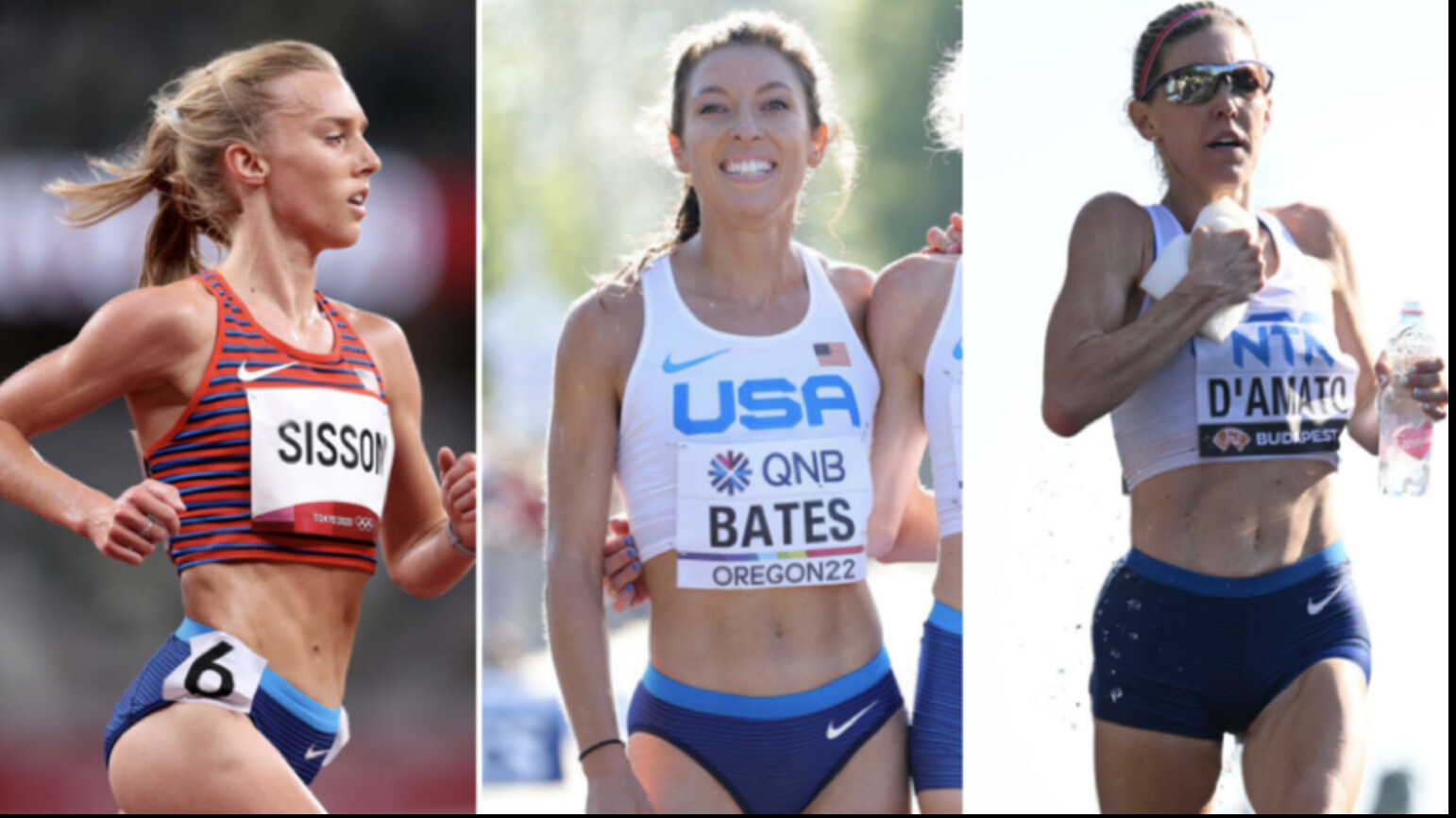
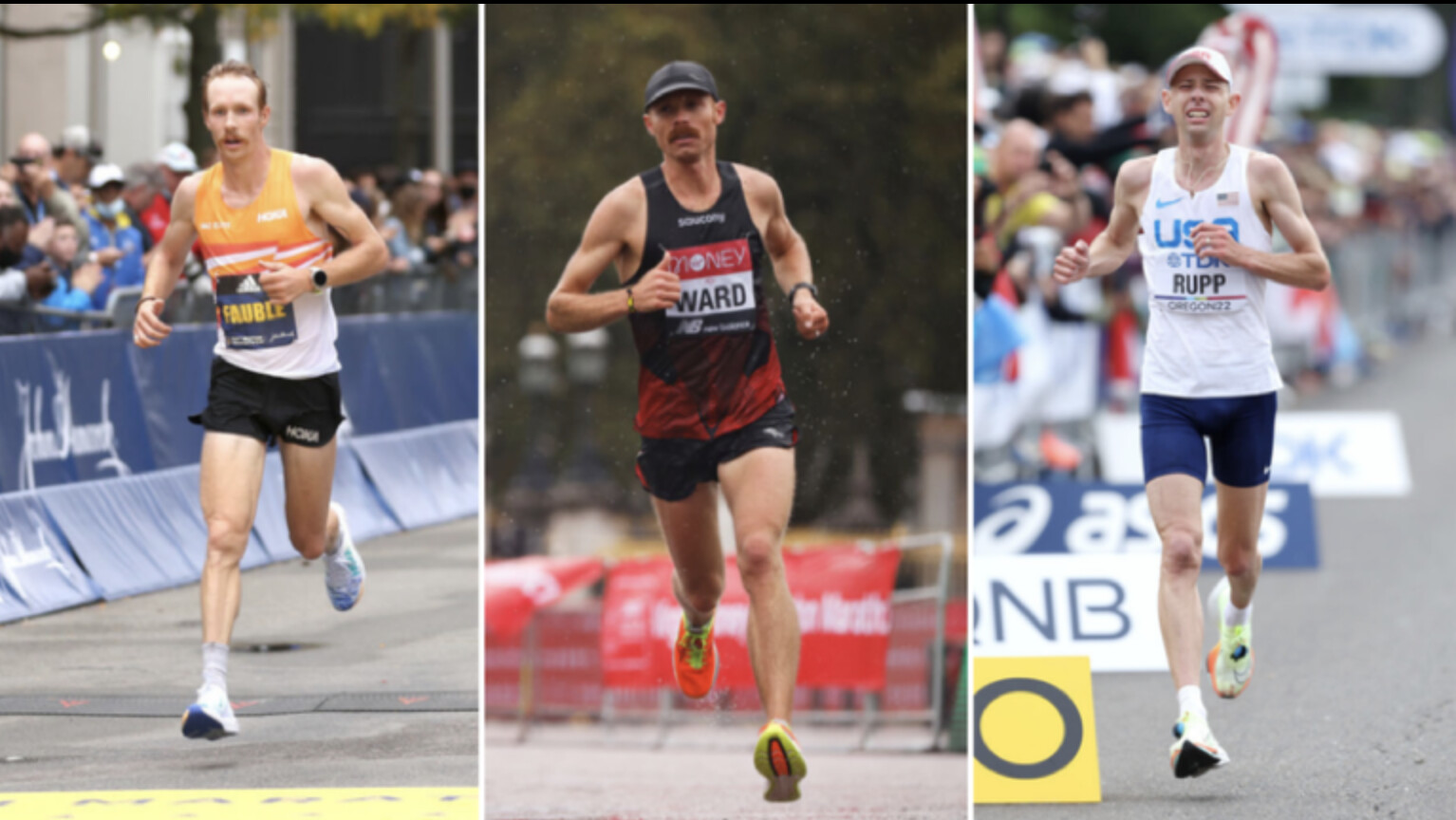
More specifically, the men’s and women’s 2024 U.S. Olympic Trials Marathon races—scheduled for February 3 in Orlando, Florida—are just four months away. And that means the top U.S. runners hoping to represent their country at next summer’s Olympics are about to begin preparing for the all-or-nothing qualifying race that decides which six runners will represent Team USA next summer on the streets of Paris.
Although several top American runners are racing the Chicago Marathon on October 8, even they have their eyes on a much bigger prize next February.
“There’s nothing in my mind that compares with being an Olympian and being in the Olympic Games,” says 26-year-old Utah-based Nike pro Conner Mantz, who returns to Chicago after finishing seventh last year in 2:08:16 in his debut at the distance. “So putting that first has been the plan for a long time. We’re just putting that first and we’re working backwards through the season with other races.”
Registration will open for the U.S. Olympic Trials Marathon in early November for runners who have surpassed the qualifying times in the marathon (2:18:00 for men, 2:37:00 for women) or half marathon (1:03:00 for men, 1:12:00 for women). The qualifying window extends through December 3—the race date of the last-chance California International Marathon, which for decades has been one of the most popular Olympic Trials qualifying races.
In 2020, a record 708 runners—465 women and 243 men—qualified for the U.S. Olympic Trials Marathon in Atlanta just before the onset of the Covid-19 pandemic. But USA Track & Field lowered the women’s qualifying standard by eight minutes from the more attainable 2:45:00 plateau, which means there will most likely be a much smaller women’s field this year.
But even so, amid the handful of runners who have a legitimate shot at making the Olympic team, there will also be dozens of dreamers, wannabes, and just-happy-to-be-there elite amateurs who have worked hard, put in the miles, and earned the chance to be on the start line of the deepest and most competitive U.S. distance-running races that only happen once every four years.
The men’s and women’s races will run simultaneously with the men beginning at 12:10 P.M. EST. and the women starting 10 minutes later. Runners have complained that a high noon start means they will be forced to race in hot, humid conditions. Over the past decade, the average temperature on February 3 in Orlando has been 69.6 degrees Fahrenheit at noon, rising to 73.3 at 4 PM. But actual temperatures have varied drastically, from 81 degrees Fahrenheit at 2 P.M. last year to 56 at the same time the year before. USATF officials have responded by saying that the start times are to accommodate live coverage on NBC and to match the expected conditions in Paris.
Here’s an update and overview of what’s next, who the top contenders are, the course, and what to expect in the next four months.
The 26.2-mile U.S. Olympic Trials course runs through downtown Orlando and consists of one 2.2-mile loop and three eight-mile loops. The marathon course will run through several neighborhoods, main streets, and business districts in Orlando, including Central Business District, City District, South Eola, Lake Eola Heights Historic District, Lake Cherokee Historic District, Lake Davis Greenwood, Lake Como, North Quarter, Lawsona/Fern Creek, SoDo District, and the Thornton Park neighborhood. It will then head east to and around The Milk District neighborhood and Main Street. (Notably, the course will come close to Disney World, which is about 15 miles to the southwest.)
Unlike the Olympic Marathon course in Paris, which will challenge runners with significant hills in the middle, the Orlando course is mostly flat. Each loop has a few minor variations in pitch, but only 38 feet separate the high and low points on the course. Ultimately, though, it’s a spectator-friendly route with chances for family, friends, and fans of runners to see the action several times.
The top women—based on personal best times and recent race results—are Emily Sisson, Emma Bates, Keira D’Amato, Betsy Saina, and Lindsay Flanagan. But the U.S. Olympic Trials races almost always produce surprises with a few great runners having off days and a few good runners having exceptional days, so there is reason to expect the unexpected.
Sisson lowered the American record to 2:18:29 last year when she finished second in the Chicago Marathon. She’s running Chicago again on October 8 along with Bates, who has said she’s hoping to break the American record. In January, Sisson, 31, chopped her own American record in the half marathon in Houston with a 1:06:52 effort, and most recently won the U.S. 20K Championships (1:06:09) on September 4 in New Haven, Connecticut. Bates, also 31, hasn’t raced at all since her sterling fifth-place effort at the Boston Marathon in April, when she slashed her personal best to 2:22:10.
While Chicago will be another good place to test themselves, both have unfinished business after Bates was seventh at the 2020 Trials and Sisson dropped out near the 21-mile mark.
The same goes for Flanagan, 32, who has been one of America’s best and most consistent marathoners for the past five years. She placed 12th at the trials in 2020. She had a breakthrough win (2:24:43) at the Gold Coast Marathon in 2022 followed by a strong, eighth-place finish (2:26:08) at the Tokyo Marathon earlier this year. In August, she ran perhaps the best race of her career, when she finished ninth (2:27:47) at the world championships in Budapest amid hot, humid conditions.
The 38-year-old D’Amato, meanwhile, just capped off another strong season with a 17th-place showing (2:31:35) at the World Athletics Championships in Budapest, a year after finishing eighth in the world championships and setting an American record 2:19:12 at the 2022 Houston Marathon. She was 15th at the Trials in 2020 in 2:34:24, just two years into her competitive return to the sport after having two kids and starting a career in real estate in her early 20s.
“It’s such a huge goal of mine to become an Olympian,” says D’Amato, who lowered Sisson’s U.S. record in the half marathon with a 1:06:39 effort at the Gold Coast Half Marathon on July 1 in Australia. “It’s really hard for me to put words into this because my whole life, wearing a Team USA jersey has been like a huge dream. And when I left the sport (temporarily), I felt like I said goodbye to that dream and I kind of mourned the loss of being able to represent my country. I feel like it’s the greatest honor in our sport to be able to wear our flag and race as hard as possible.”
Saina, a 35-year-old Kenya-born runner who ran collegiately for Iowa State University, became a U.S. citizen in late 2021. She placed fifth in the 10,000-meters at the 2016 Olympics in Rio de Janeiro while competing for Kenya. She’s spent the past several years splitting time between Kenya and Nashville, Tennessee, where she gave birth to a son, Kalya, in December 2021.
She’s returned with a strong fourth-place 1:11:40 result at the Tokyo Half Marathon last October and a fifth-place 2:21:40 showing at the Tokyo Marathon in February. In May, Saina won the U.S. 25K Championships in Michigan. Two weeks ago she broke the tape at the Blackmores Sydney Marathon in Australia in 2:26:47.
Other top contenders include but are not limited to Tokyo Olympics bronze medalist Molly Seidel (who’s personal best is 2:24:42), 2022 U.S. Olympic Trials champion Aliphine Tuliamuk (2:24:37, 11th in Boston this year), Susanna Sullivan (2:24:27 personal best, 10th in London this year), two-time Olympian and 2018 Boston Marathon winner Des Linden (2:22:38), and Sara Hall (2:20:32, fifth at last year’s world championships), plus Kellyn Taylor (2:24:29), Nell Rojas (2:24:51), Sarah Sellers (2:25:43), Lauren Paquette (2:25:56), Dakotah Lindwurm (2:25:01), Annie Frisbie (2:26:18), Sara Vaughn (2:26:23), Tristin Van Ord (2:27:07), and Jacqueline Gaughan (2:27:08).
The list of potential men’s top contenders isn’t as clear-cut, partially because there are so many sub-2:11 runners and several fast runners who are relatively new to the marathon. But all that suggests a wide-open men’s race where more than a dozen runners are legitimately in the mix for the three Olympic team spots. That said, the top runners on paper, based on both time and consistent results over the past few years, are Scott Fauble, Jared Ward, Galen Rupp, Conner Mantz, Leonard Korir, Matt McDonald, and C.J. Albertson.
The 31-year-old Fauble, who was 12th in the Olympic Trials in 2020 and owns a 2:08:52 personal best, has finished seventh in the Boston Marathon three times since 2019 and also finished seventh in the New York City Marathon in 2018. Ward is a 2016 U.S. Olympian and has three top-10 finishes at the New York City Marathon and a 2:09:25 personal best from Boston in 2019. He’s 35, but he just ran a 2:11:44 (27th place) at the Berlin Marathon in late September.
Rupp, who won the past two U.S. Olympic Trials Marathons and earned the bronze medal in the marathon at the 2016 Olympics, is nearing the end of his competitive career. He boasts a 2:06:07 personal best and has run under 2:10 more than any American in history, including when he finished 19th at the world championships (2:09:36) last year. He’s a bit of a wild card because he’s 37 and hasn’t raced since his lackluster 17th-place showing at the NYC Half Marathon (1:04:57) in March, but the world will get a glimpse of his fitness in Chicago this weekend.
Mantz followed up his solid debut in Chicago last fall with a good Boston Marathon in April (11th, 2:10:25) and solid racing on the track and roads all year, including his recent runner-up showings at the Beach to Beacon 10K in August and the U.S. 20K Championships in September.
McDonald, 30, who was 10th in the 2020 U.S. Olympic Trials, has quietly become one of the best marathoners in the U.S. while serving as a postdoctoral associate in chemical engineering at M.I.T. His last three races have clocked in at 2:10:35 (Boston 2022), 2:09:49 (Chicago 2022), and 2:10:17 (Boston 2023). The only other runner who rivals that kind of consistency is Albertson, 29, who has run 2:10:23 (Boston 2022), 2:10:52 (Grandma’s Marathon 2022) and 2:10:33 (Boston 2022) in his past three marathons and was seventh in the U.S. Olympic Trials in 2020 (2:11:49).
The men’s race will likely have a mix of veteran runners and newcomers who have run in the 2:09 to 2:10 range since 2022. Among those are 2020 U.S. Olympic Trials runner-up Jake Riley (2:10:02 personal best), who is returning from double Achilles surgery; 2016 U.S. 10,000-meter Olympian Leonard Korir (2:07:56), who ran a 2:09:31 in Paris in April; Zach Panning (2:09:28, plus 13th at the world championships in August); U.S. 25K record-holder Parker Stinson (2:10.53); Futsum Zienasellassie who won the California International Marathon last December in his debut (2:11:01) and then doubled-back with a new personal best (2:09:40) at the Rotterdam Marathon in the spring; Abbabiya Simbassa, who ran a solid debut marathon (2:10:34) in Prague this spring; and Eritrean-born Daniel Mesfun (2:10:06) and Ethiopian-born Teshome Mekonen (2:10:16), who both received U.S. citizenship within the past year; and solid veterans Nico Montanez (2:09:55), Elkanah Kibet (2:10:43) and Nathan Martin (2:10:45).
Additional sub-2:12 runners who will be in the mix are Andrew Colley (2:11:26), Clayton Young (2:11:51), Brendan Gregg (2:11:21), Josh Izewski (2:11:26), Jacob Thompson (2:11:40), and Kevin Salvano (2:11:49).
As noted previously, some top contenders will season their marathon legs one final time at the flat and fast Chicago Marathon on October 8. An even more select few will opt for the New York City Marathon on November 5. After that, nearly every American with eyes set on an Olympic berth will double-down over the holiday season for that one final, critical marathon training cycle. Expect to see a wide range in heat training, from sauna protocols, to warm weather training trips, to simply an adjusted race day strategy.
Of course, with the Olympic Marathon falling under the purview of World Athletics, qualifying for the U.S. Olympic Marathon team is not quite as simple as finishing on the podium in Orlando. Any American looking to have a breakout performance and finish within the top three at the U.S. Olympic Trials Marathon will need to have run under 2:11:30 for men and 2:29:30 for women within the qualification window, which spans from November 1, 2022 to April 30, 2024. Given the possibility of oppressively hot and humid temps on February 3 in Orlando, they’re best bet is to secure that time now.
These qualification standards are in accordance with a new rule from World Athletics, which allows national Olympic committees to circumvent the typical Olympic qualification process of running under 2:08:10 for men and 2:26:50 for women, or being ranked among the top 65 in the world on a filtered list of the top three athletes from each country. The catch, though, is that three other runners from said country must have met one of these two standards. If this sounds complicated, that’s because it is.
For the hundreds of elite amateurs on the cusp of hitting that coveted U.S. Olympic Trials qualifying time, it’s do or die mode. While a few made the cut at the Berlin Marathon on September 24, one of those opportunities was lost when the Twin Cities Marathon was canceled on October 1 because of excessive heat. Temperatures are shaping up for an auspicious day in Chicago this weekend, and many more will give it a final shot at the Columbus Marathon on October 15; Indianapolis Monumental Marathon on October 28; the Philadelphia Marathon on November 18; and the last-call California International Marathon, a point-to-point race ending in Sacramento, California on December 3.
Ultimately, only six American runners will likely continue on along the road to Paris and earn the chance to run in the men’s and women’s Olympic marathons next August 10-11. For a handful of younger runners, the 2024 U.S. Olympic Trials will be a motivation to reinvigorate the Olympic dream or keep a faint hope alive, at least until the 2028 U.S. Olympic Trials that will determine the team for the Los Angeles Olympics. But for many runners, the journey to the U.S. Olympic Trials in Orlando will lead to the end of their competitive road running careers as new jobs, young families, a switch to trail running, and other priorities will take hold.
“I think the Olympic Trials is an important part of American distance running,” says Kurt Roeser, 36, a two-time U.S. Olympic Trials Marathon qualifier who works full-time as a physical therapist in Boulder, Colorado. “I’m glad that they kept it the same event for this cycle and hopefully for future cycles because it gives people like me a reason to keep training. I’m older now and I’m not going to actually have a chance to make an Olympic team, but for somebody that’s fresh out out of college and maybe they just barely squeak in under the qualifying time, maybe that’s the catalyst they need to start training more seriously through the next cycle. And maybe four years from now, they are a serious factor for making the team.”
by Outside Online
Login to leave a comment
After Much Anticipation, Orlando Announced as Host of the Olympic Marathon Trials
The race will take place on February 3, 2024.
USA Track & Field (USATF) has named a host city for the 2024 Olympic Marathon Trials, and it’s Orlando, Florida.
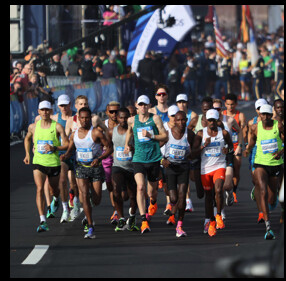
The Trials will take place on February 3, 2024, giving the local organizing committee on the ground only 15 months to prepare for the high-profile event.
The top three finishers in the men’s and women’s races will represent Team USA at the 2024 Olympic Games in Paris (provided they have met the ever-evolving standards set by World Athletics, the sport’s worldwide governing body, to run at the Games).
USATF was slow in naming a host city for the event. By contrast, when the Atlanta Track Club hosted the 2020 Olympic Trials, those organizers had 22 months to put together a race for about 700 men and women.
The fields for the race in Orlando will likely be smaller, however, because the qualifying standards to get into the Trials are tougher than they were to get into the 2020 race. In December 2021, USATF announced that women had to run a marathon faster than 2:37 in order to qualify. (For the 2020 Trials, that time was 2:45.) Or, they need to run a half marathon faster than 1:12.
Following Sunday’s NYC Marathon, only 60 women have run a marathon qualifying time. The window for half marathon qualifying opens on January 1, 2023. Men wanting to qualify for the 2024 Trials have to run 2:18 or faster (last time, the standard was 2:19) or 1:03 in the half marathon. As of mid-October, which was the last time USATF updated its list, 68 men had qualified for the Trials.
The California International Marathon, to be run this year on December 4, typically yields several Trials qualifiers.
Orlando is the first Florida city to be awarded the event.
The 2020 Olympic Marathon Trials were one of the last elite races held before the COVID pandemic shut down the world for more than a year and postponed the Olympics. At the 2021 Olympic marathon, held in Sapporo, Japan, American Molly Seidel won a bronze medal. The 2024 Olympic marathons in Paris will be held in August of that year.
Login to leave a comment
USATF Announces Tougher Olympic Marathon Trials Standards for 2024
A major caveat: The Trials might not be held if World Athletics won’t accept the top three finishers as Olympians.
Qualifying standards for the 2024 Olympic Marathon Trials were announced today at the USA Track & Field (USATF) annual meeting, and they’re faster than the times needed to get into the 2020 race—especially for women.
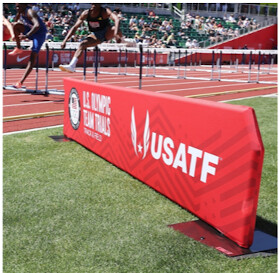
Women who want to enter the race must have qualified with a 2:37 marathon or faster, or a 1:12 half marathon or faster. The marathon time is 8 minutes faster than the 2:45 required to get into the 2020 Trials. (The half marathon time in 2020 was 1:13.)
For men, the times are 2:18 and 1:03, one minute faster at both distances than the 2020 times (2:19 and 1:04).
The qualifying window for marathon times opens on January 1, 2022 and for half marathon times, January 1, 2023.
The 2020 Trials, held in Atlanta, had a historically large field, with 511 women and 260 men qualified to run. Improved shoe technology made it easier for many sub-elite runners to hit the times they needed to qualify for the race.
The top three made the Olympic team—for the women, it was Aliphine Tuliamuk, Molly Seidel, and Sally Kipyego. On the men’s side Galen Rupp won, Jake Riley was second, and Abdi Abdirahman was third.
Behind them, the race turned into a celebration of the strength of distance running in the U.S., with hundreds of runners who had no realistic shot of making the Olympic team soaking up the crowd support along the course and celebrating their achievements.
Leaders at USATF apparently decided the field was too big. Based on the women’s qualifying list from 2020, only 83 women had a marathon time faster than 2:37. Only eight women qualified with a half marathon faster than 1:12.
Conceivably, with the stricter standards, the women’s field could go from 511 in 2020 to 91 runners in 2024.
By the same measure, the men’s field from 2020 would have been 76 people smaller in the marathon, 15 smaller in the half marathon. The men’s field would shrink from 260 to 169.
Much of this discussion may be moot. World Athletics, which governs track and field and the marathon at the Olympics, has encouraged national governing bodies to rely on world rankings to choose their national teams, rather than a one-day Trials format from which the top three make the team.
The Olympic standards are also expected to be stricter, too. In 2021, for the marathons in Sapporo, Japan, the Olympic standards were 2:11:30 for the men and 2:29:30 for the women—in other words, it wasn’t enough for Americans to have finished in the top 3 at the Trials in the marathon. They also had to have run a marathon faster than the Olympic standard to get to go to the race.
World Athletics has not yet announced what the 2024 Olympic standards will be.
USATF has not yet sent out a request for proposal (RFP) for cities to host the Trials, which puts the process well behind its typical cycle. (Atlanta was announced as the host of the 2020 Trials by April 2018, meaning bids were in to USATF months before that.) Races are not thought to be clamoring to host, after a year in which most major marathons were canceled due to the pandemic and finances are stretched in the road racing industry.
Although the Trials in Atlanta were seen as a huge success, the local organizing committees usually lose money on the race because of restrictions on which companies can sponsor the event.
by Runner’s World
Login to leave a comment
Two Treadmills Inside ... a Pub?! How This Runner Broke the 100-Mile Treadmill World Record
In his second 100-miler ever, he ran a 6:55/mile pace inside a local pub.
For the second weekend in a row, one of Zach Bitter’s 100-mile world records has fallen.
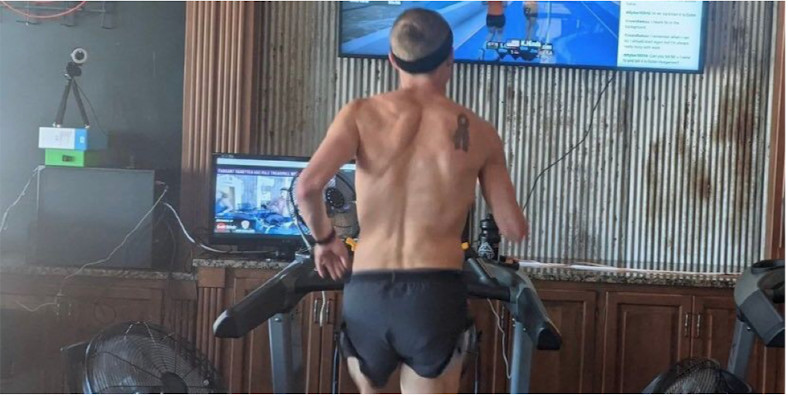
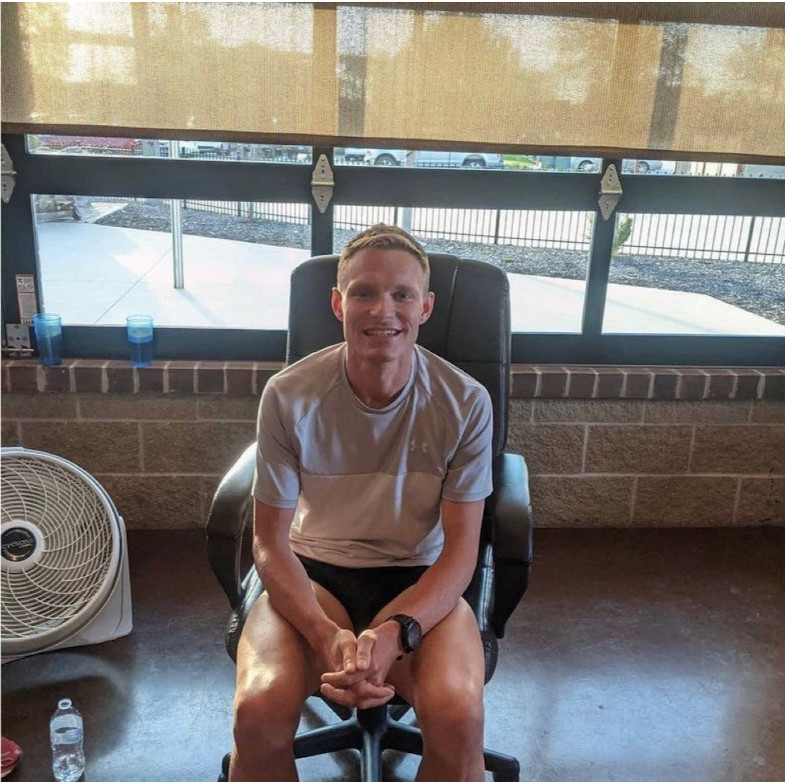
Taggart VanEtten, 25, of Morton, Illinois, smashed Bitter’s 100-mile treadmill world record with a time of 11:32:05. VanEtten’s average pace was 6:55 per mile, and he beat Bitter’s record by nearly 40 minutes.
That’s quite the accomplishment for only his second 100-mile run ever.
“I am so thankful that I am able to do this,” VanEtten told Runner’s World. “Every day, I wake up before 4 a.m. and do my first of two runs a day. ... I’m grateful to [have the time] to train, and I want to keep improving and go for the overall 100-mile world record.”
VanEtten, a PE teacher at Bartonville Grade School, is relatively new to the ultra scene. In college, he ran for Illinois Central College and competed in triathlons. But in November 2019, on only 23 miles of training a week, he ran the Indianapolis Marathon in 2:37:36. It was about 20 minutes off the men’s Olympic Marathon Trials qualifying times, so VanEtten pondered if he could run that mark with higher mileage and focused marathon training. But at that point, the 2020 Trials were less than four months away, so he decided to focus on making the 2024 Trials.
Last summer, he built his mileage all the way up to 200-mile weeks. However, he wasn’t able to put this fitness to the test with almost all marathons canceled because of the pandemic.
To fill that void, he chose an ambitious goal for November: a 100-miler.
“Well, I could sign up for this Tunnel Hill 100 miler, finish it, and never do another 100-miler again like many people say,” VanEtten said. “I had to beg the race director to let me in since there were a limited number of spots, and I was late signing up. 12:19:54 later, I crossed the finish line.”
That time is incredible for any 100-mile runner; in fact, it made him the fifth fastest American in history for the distance. It came after an intense training block where he ran three weeks on, one week off, peaking at a 258-mile week.
His newfound talent got him thinking about a new goal: What if he attempted the 100-mile treadmill record?
“I decided on January 2, when COVID-19 numbers were skyrocketing again,” he said, knowing that traveling to in-person races would still be risky. “I can’t get days off during the school year as a teacher, and I couldn’t fly anywhere, so why not train and promote this treadmill run?”
With that goal in mind, VanEtten spent every morning before school this winter and early spring on the treadmill. He completed additional runs after school and double long runs on the weekends, building up again to 200-plus mile weeks.
On May 1, he set up two treadmills, which he borrowed from a local gym, and a Zwift monitor in Seasons Gastropub, a local restaurant in Morton. There was also a space for his small supporters section, to keep him motivated for 11 hours and change.
VanEtten chose to run in the Hoka Carbon X 2 shoes, with Compress Sport pro marathon socks, Run Rabbit Fly Ease 2 shorts, and a few Amazon headbands to keep sweat out of his eyes.
Every three miles, VanEtten increased the incline to 0.5 and 1.0 for a quarter-mile each to switch up the muscles being used. Being on a treadmill for so long with the same motion can lead to problems in the legs and hips.
After smooth sailing for most of the day, VanEtten considered increasing his pace around mile 75, but he said he was luckily talked out of it by his crew. He said the building was heating up later in the day, and he could’ve paid the price.
“After that, I kept a mindset of telling myself, ‘How many times have you run 25 miles at a 7-minute pace? Or 20 miles?’’ VanEtten said. “It’s gonna hurt bad, but as long as I keep up nutrition, I should be done in three hours.”
When the final miles arrived, it became clear that VanEtten would get the record. From miles 89 to 99, his mentor and fellow local P.E. teacher ran on the treadmill beside him.
The final mile was just VanEtten. As the crowd counted down to 100, VanEtten patted his purple ribbon tattoo on his back—a tribute to his dad who passed away six years prior on April 20, 2015. The anniversary was the day before his run.
“My dad, man, he was a five-minute miler in 8th grade,” VanEtten said. “When I was in high school, he came to all of my meets and he thought I was nuts then. He passed away before I started my triathlons, but I just hope I’m making him proud. I’m working a job I love, I just bought my first house a month ago, and I’m pursuing my dream in running. I hope he’s looking down proudly.”
When he finally hit 100 miles and the record, VanEtten jumped off the treadmill and embraced his mom in an emotional hug.
“She said something to me. That I needed to finish this for my dad,” VanEtten said. “It was a moment I will never forget.”
After a brief champagne celebration and mingling with his fans, he made his way home to enjoy a shower and eat an entire medium-size pizza. He was off work Monday to recover, but was back in school on May 4 to see his students and the running team he coaches.
So, what’s next for VanEtten? He’ll race at Six Days in the Dome on June 18, chasing the overall 100-mile record of 11:14:56, which was set on April 26 by Lithuanian runner Sania Sorokin. The indoor track will be the third different surface VanEtten will run on in three 100-mile attempts.
“I’m not gonna be upset if I go out fast,” VanEtten said. “I want to go out like Steve Prefontaine at suicide pace because it’ll be a good day to die. That’s what I did at Tunnel Hill, and that’s what I want to do there. After I do that, I plan to enjoy my summer.”
by Runners World
Login to leave a comment
University of Oregon seniors facing virtual graduation frustrated by Olympic Trials, track plans
When the University of Oregon announced in early February it will have a virtual commencement ceremony for the second year in a row, the university was met with frustration from some students — not because they wanted to shirk COVID-19 guidelines, but because they believed it was a double standard.
UO's virtual commencement ceremony is scheduled for June 12. A week later, the 2020 U.S. Olympic Team Trials for Track & Field will be held at Hayward Field on UO's campus.

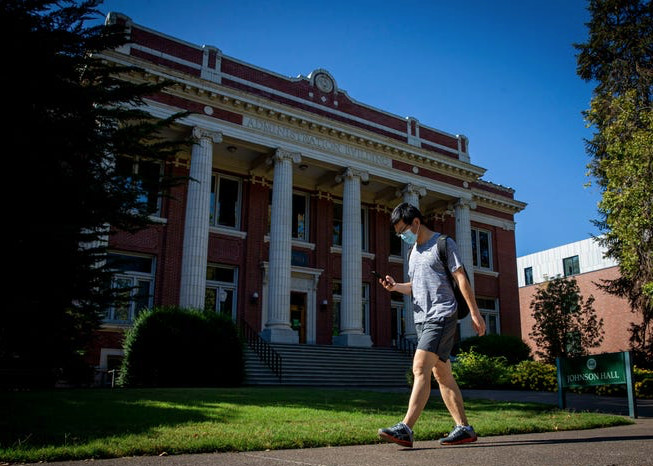
UO also announced this week it will host five collegiate track and field meets at Hayward, starting the weekend of April 2 and ending with the NCAA Championships June 9-12, the same week as graduation.
The university is not involved with the planning or organization of the Olympic trials. The trials are run by TrackTown USA, an outside party that contracts with UO for the use of Hayward Field.
Spectators are not welcome at the first NCAA meet, UO said.
While the university is unwavering on a virtual commencement, it is looking at adding some form of in-person activity for graduation.
For some students, though, it's not enough.
"I just want the (Olympic) trials and graduation to be held at the same standard — so either they both happen or they both don't," said Morgan Leone, a 22-year-old UO senior graduating in June. "And if they both don't, it's unfortunate they couldn't make it happen. (People) worked really hard for both of them, but I would love to see them both happen regardless."
Spring sports moving forward
The Olympic trials for track and field has been held at Hayward Field six times since 1972, though the first year only included men's events. The 2020 trials will be the seventh.
They are organized locally by TrackTown USA, a Eugene-based nonprofit organization that runs other large-scale track and field events. TrackTown has contracted with UO to rent space on campus for these events before, and this year is no exception.
The 2020 Olympics, which were postponed globally because of the COVID-19 pandemic, are scheduled to be held July 23 through Aug. 8 in Tokyo.
Although TrackTown consistently had to adjust plans for the trials, working with public health officials and the UO to adapt to changing policies, said CEO Michael Reilly, the organization still plans to host it in June.
"We are full-steam ahead in planning to host the Olympic trials in June," Reilly said. "We are remaining hopeful that the event is going to continue to be able to be held, and, the conditions here in Oregon and around the country continue to improve. But, if anything, we've learned over the last year we have to take things week by week."
UO sports such as softball, soccer and track and field are underway this spring. The NCAA has been regularly testing athletes for COVID-19 this year.
The Oregon track and field team will host five meets at the new Hayward Field this spring, which will "only be hosting guests of student-athletes and coaches as the meet schedule begins," and no spectators, Oregon Athletic Director Rob Mullens said.
More in-person activities will be allowed as guidelines change, potentially meaning spectators at events.
State guidelines vary standards
Lane County's risk level set by Oregon Health Authority has been dropping for several weeks. As the vaccination rate increased, the number of new cases has decreased significantly and as of Friday, the county was put in the "lower risk" category, which is the lowest category a county can be in.
"Even with Lane County moving into a lower risk category, the university’s educational and research activities are still restricted by the governor’s orders for higher education issued last June," UO spokesperson Molly Blancett told The Register-Guard in an email.
The governor's executive order notes that for research, residential and instructional activities, universities should follow what is directed from the Higher Education Coordinating Commission. It also states other activities on campus, such as athletics, need to comply with other executive orders and OHA guidance specific to the risk level of the county.
In the lower risk category, indoor classroom instruction cannot exceed 50 people, and outdoor classroom instruction 300 people, the HECC states. Outdoor recreation, including college athletics events, are allowed a maximum of 50% occupancy, according to OHA guidelines.
"These restrictions (for UO) are independent from activities organized by outside parties that have contracted to use UO facilities," Blancett said.
TrackTown's operating plans not set yet
However, TrackTown always has to comply with the policies laid out by UO on the use of the space, Reilly said, as part of the contractual agreement.
UO also will be paid by TrackTown for space used, as part of that contract. The exact dollar amount is still unclear, Reilly said, but will likely be set in the coming weeks as they come to better understand the amount of space the organization will rent from UO.
Lane County Public Health also is involved in Olympic trials planning and has been for past trials, Reilly said. When the time comes, TrackTown will present its plan to OHA.
"We fully expect a good rigorous analysis from them. We'll try to do our best to answer their questions that may evolve at that point, a need for us to adapt and change the operating plans that we're proposing," Reilly said.
"I imagine it's going to be an ongoing back-and-forth discussion with them in the coming weeks to try to arrive at a set of operating plans that they feel comfortable about," he said. "That will enable us to not only conduct a safe event for the participants there, but also do a good job of protecting the broader community."
UO entertaining in-person grad activities
The Olympic trials being contracted out to a third party doesn't change students' call for UO to seek alternatives for graduation.
"That really frustrated me in the sense that they're kind of hiding behind TrackTown," Leone said about UO. "I feel like they've been using that as an excuse.
"In a way like I feel like we signed a contract with the school, and we all paid our way through the university whether we liked it or not," she said.
"And it's frustrating to see that (UO) will be getting a paycheck out (from) TrackTown, and it seems very correlated to why they also want to keep pushing it to go on. I feel like the university tends to forget that we are also paying students and paid a lot of money to go here."
Leone is one of 1,600-plus people who have signed an online petition for UO to reconsider the decision to hold a virtual commencement and include more student input on alternatives.
The petition points out changes such as increased access to vaccines in Lane County, along with the track and field plans as reasons to reconsider.
UO announced there may be some opportunity for in-person activities at commencement, though the actual commencement ceremony will still be virtual. However, it's still unclear what these activities could be.
In a typical year, each school and college at UO (the business school, college of arts and sciences, etc.) has its own smaller commencement ceremony. This is where students actually have their names read and walk across stage to receive their degrees. Then there is a separate, university-wide commencement ceremony with speeches from UO President Michael Schill and other guests.
When asked whether these smaller school-specific ceremonies still were being considered, Blancett said UO is "actively exploring how it might add an in-person activity to complement planned virtual commencement ceremonies," but had nothing more to share at this time.
Students suggest safe alternatives
Leone set up a template email that students could fill out and send to UO leaders suggesting a way of doing in-person commencements. The program she uses shows about 200 people have used the template.
"It's basically suggesting doing many different ceremonies throughout the day at many different locations, without families, so Hayward, also at Autzen field, the EMU lawn," she said. "Everything I wrote followed the extreme risk guidelines, so it'd be 25 people outside all socially distanced ... it would be very strict, but at least families could tune in and watch."
With about 30 minutes per ceremony, following the most stringent guidelines the state has set, Leone said she calculated it would take a couple of days to get through everyone including the 2021 graduates, but it would be possible.
"I don't want anyone to think I'm disregarding COVID or trying to push for unsafe COVID activities," Leone said. "I just figured there are other universities working really hard to try and make something else safe. (UO) can absolutely do that for the seniors."
In the statement, UO's Blancett said UO is "eager to recognize students’ successes and achievements in meaningful ways."
"The health and safety of our community is a top priority, as is the ability to remain flexible while adhering to a rapidly changing guideline that may become more or less stringent over time," she said. "The safety of our campus community remains a top priority and a guiding principle as we navigate moving operations in and out of different risk levels."
Login to leave a comment
Wilkerson Given is Making Another Trial Run for Olympics
On Leap Day, Wilkerson Given hopes to take an Olympic leap – although an Olympic run might be a better description.
The former Mountain Brook high school distance runner will be competing in the 2020 U.S. Olympic Team Trials marathon on Feb. 29 in Atlanta. The course runs through the heart of Atlanta and past monuments from the 1996 Olympic Games.
The 2020 event has one of the largest Olympic Trials field ever, with 261 men and 511 women having run qualification standards. The top three finishers in both men’s and women’s races will make up the U.S. marathon team for the 2020 Summer Games, being held in Tokyo July 24 to Aug. 9.
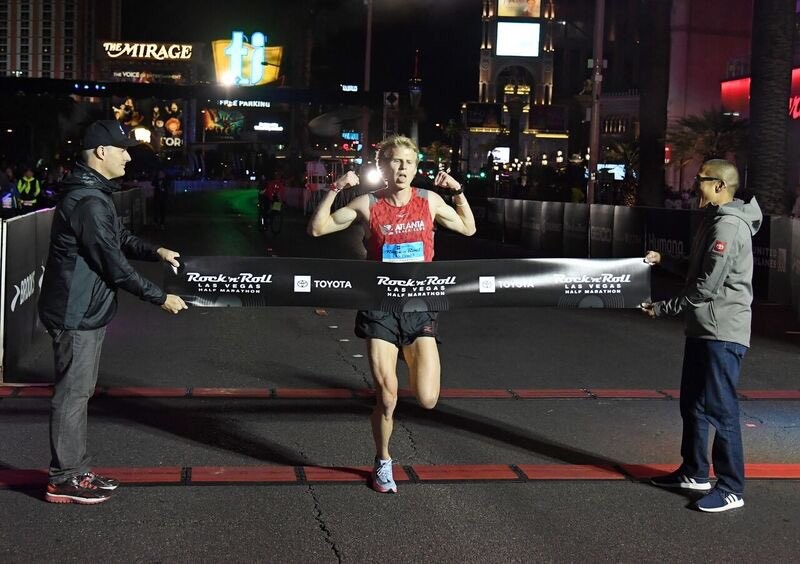
“I think there’s a group of 15-20 guys who all have a legitimate shot of making the team, but it just depends on the day,” Given said. “Marathons are hard to predict because a lot can happen in the course of a race.”
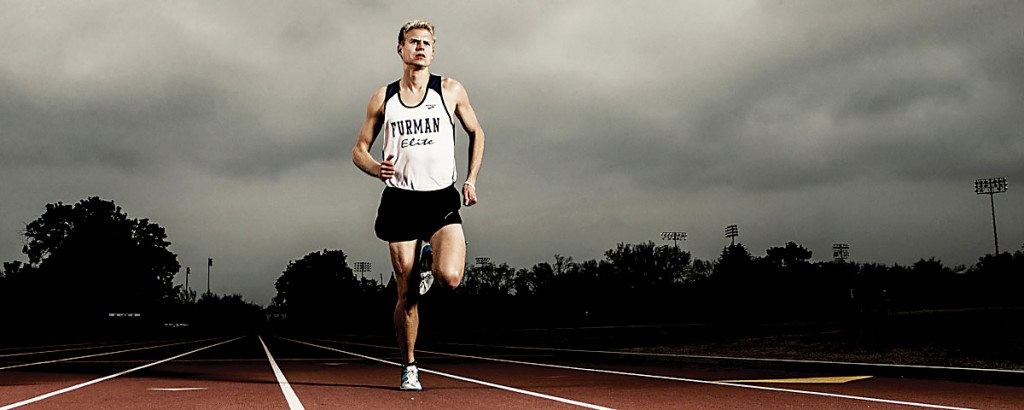
The race starts at 11 a.m. CST and will be televised by NBC.
This will be Given’s second time running in the Olympic Trials marathon. He competed in the 2016 trials in Los Angeles and finished 54th with a time of 2:27.50.
Given, 28, qualified for the 2020 trials by running 2:11.44 in the Bank of America Chicago Marathon last fall.
“It’s going to be a tough race, but I wouldn’t say there’s any pressure on me,” Given said. “I’m more excited about the opportunity.”
Given will be competing in his backyard, so to speak. He moved to Atlanta from The Woodlands, Texas, in 2018 and is a professional runner with the Atlanta Track Club Elite.
“The Atlanta track club was definitely part of my decision to move to Atlanta,” Given said. “The job I had in Texas had flexible relocation.
“Being from the Southeast, Atlanta is close to home, close to where I went to college. I have college friends and some high school friends who live in the Atlanta area.”
Shortly after joining Atlanta Elite, Given won the 2018 Rock ‘n’ Roll Las Vegas Half Marathon in 1:02.48. He also finished seventh in the USATF Half Marathon Championships in May 2018.
by Rubin E. Grant
Login to leave a comment
2028 US Olympic Trials Marathon
Most countries around the world use a selection committee to choose their Olympic Team Members, but not the USA. Prior to 1968, a series of races were used to select the USA Olympic Marathon team, but beginning in 1968 the format was changed to a single race on a single day with the top three finishers selected to be part...
more...After have had Open Heart Surgery, Erin Menefee Qualifies for Olympic Trials
Two and a half years ago, Erin Menefee didn’t know if she’d be able to run competitively again after having open heart surgery. But on December 8, the 27-year-old physical therapist realized her dream when she qualified for the 2020 U.S. Olympic Marathon Trials at the California International Marathon (CIM) in Sacramento with a time of 2:43:10.
Surrounded by dozens of other women who qualified for the first time, Menefee basked in the accomplishment of a goal that motivated her throughout the long recovery. For the first time since she underwent surgery for a rare congenital heart defect in July 2017, she ran a personal best by more than eight minutes.
Setting a lifetime PR that beat the Trials standard by almost two minutes wasn’t just a running milestone for the San Diego native—it was a turning point in her life.
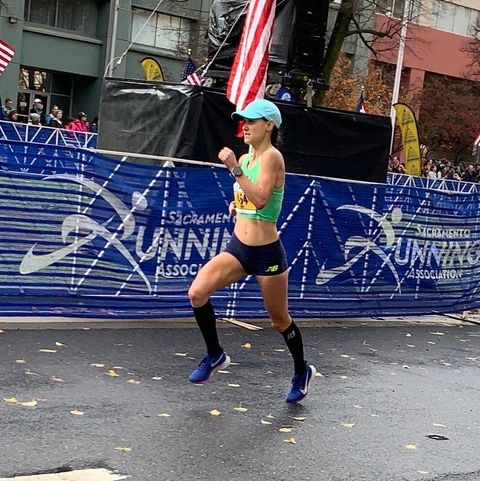
“Not having the definition of ‘post-heart surgery PR’ for this one just feels like a big weight [has been] lifted,” Menefee told Runner’s World. “I’m finally back to who I was before.”
Menefee was nearing the end of a long run in December 2015 when her heart started beating at an alarmingly fast pace and pain shot down her left arm. At just 24 years old, the former collegiate runner for the University of Arizona thought she was having a heart attack. Menefee could barely breathe, but she managed to get herself to the emergency room.
After a series of tests, her cardiologist discovered that she had partial anomalous pulmonary venous return, a condition where the veins that are supposed to carry blood to the heart’s upper left chamber instead carry it to the heart’s upper right chamber, or to other blood vessels. When this happens, poorly-oxygenated blood mixes with oxygen-rich blood, thus robbing the body of oxygen. The diagnosis meant that Menefee was only getting about 60 percent of the oxygen needed from her lungs to her body.
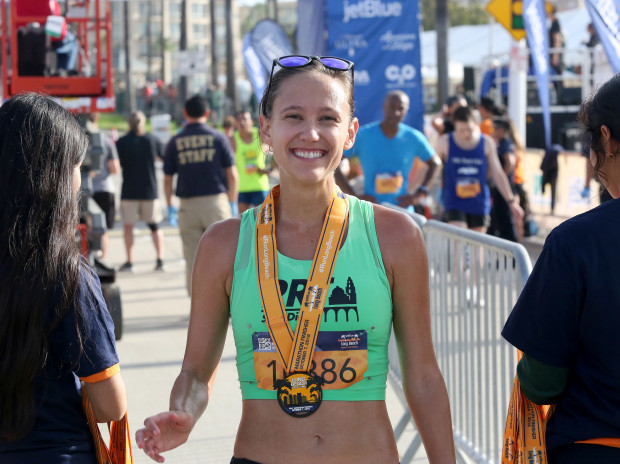
Because she was a healthy, young runner competing at a high level, the doctors decided to forgo the surgery option for periodic check-ups on the size of her heart. Eight months later, Menefee was getting lightheaded standing up from a chair and the tips of her fingers turned blue from the lack of oxygen traveling to the rest of her body. When she went in for more tests, they discovered that her heart was so enlarged that it required surgery.
On July 26, 2017—after she graduated from San Diego State University’s doctor of physical therapy program and days after she took her board exams—Menefee went in for surgery at Ronald Reagan UCLA Medical Center. During the nine-hour procedure, doctors built a stent and moved her vein into its proper place from her heart to her lung. In order to reach her organs, they had to saw open her sternum.
The surgery was a success, and six weeks later, Menefee was cleared to go on her first run: an 8:49 mile.
Just five months before her surgery, Menefee had made her 26.2 debut at the 2017 Los Angeles Marathon, finishing in 2:51:31—within striking distance of 2:45:00, the 2020 Trials time standard. She trained for the marathon with the San Diego-based Prado Racing Team under Paul Wellman.
by Taylor Dutch
Login to leave a comment
2028 US Olympic Trials Marathon
Most countries around the world use a selection committee to choose their Olympic Team Members, but not the USA. Prior to 1968, a series of races were used to select the USA Olympic Marathon team, but beginning in 1968 the format was changed to a single race on a single day with the top three finishers selected to be part...
more...Gwen Jorgensen announces move to track for 2020
The 2020 US. Olympic Marathon Trials on Feb. 29 were marked on Gwen Jorgensen’s calendar since her Nov. 2017 announcement that she was leaving the triathlon to pursue running full time in hopes of winning the 2020 Olympic gold medal in the marathon.
But now, less than three months out from the event, Jorgensen announced that she will not run the U.S. Olympic Marathon Trials and instead focus on making the U.S. team for the Summer Games on the track in the 10,000 meters.
“It’s a multitude of emotions,” Jorgensen, 33, says. “I’m disappointed. At the same time, I’m also excited. I’m at a point where I’m running 70 miles per week and training is going well. I just know that if I went to the trials, running 70 miles per week, I’d be hoping that I made a team. That’s not what I want to do at an Olympic Trials.
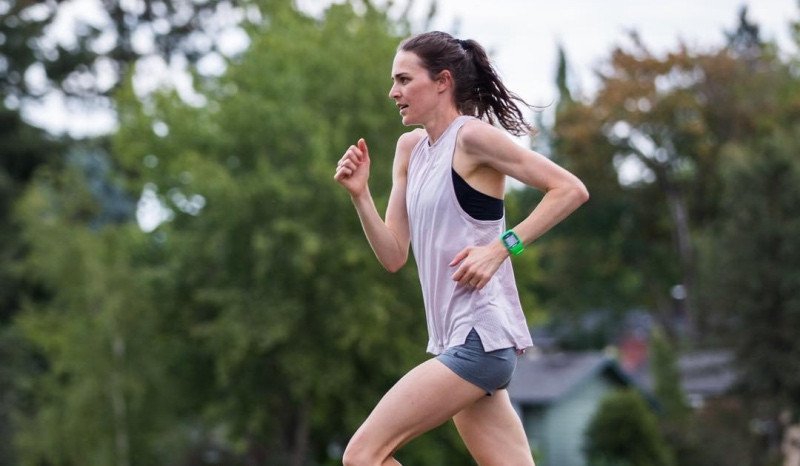
I want to go in confident and knowing that I have the ability to make a team. My goals in the marathon aren’t changing. My timeline is.”
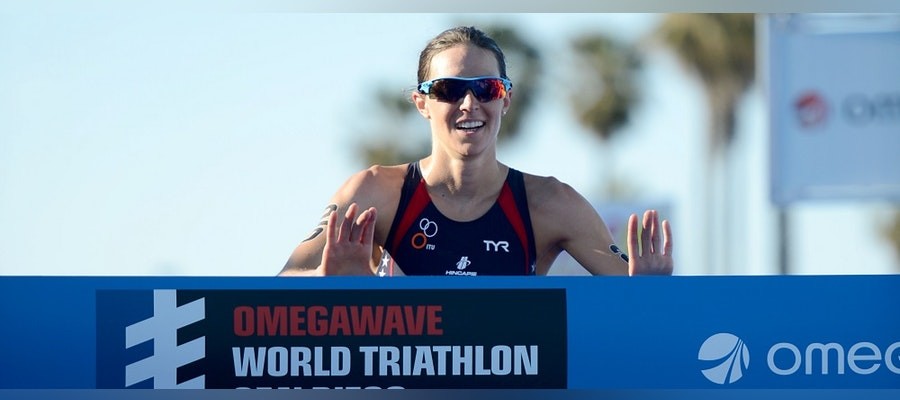
Heel surgery forced Jorgensen, who converted to distance running after winning the Rio Olympic triathlon, to pass up the Feb. 29 U.S. Olympic Marathon Trials and focus on the track and field trials in June in the 10,000m and, probably, the 5000m.
She made the decision after recent talks with her coach, Jerry Schumacher, following a difficult recovery from late May surgery to correct Haglund’s deformity.
“I could get bent out of shape and sad about it, but at the end of the day, I’m excited because I know this path that I’m on will not only be a successful route, but I also think it will lead to success long term in the marathon," she says. "I’m confident in my abilities on the track."
Jorgensen’s goal was a lofty one from the onset. No American woman has won gold in the marathon at the Olympics since Joan Benoit Samuelson’s victory in the 1984 inaugural running. The 2020 trials, where the top three finishers qualify for Tokyo, are shaping up to be one of the most competitive races of the year, as American women’s distance running is at its highest level with recent World Marathon Major victories by Shalane Flanagan at the 2017 New York City Marathon and Desiree Linden at the 2018 Boston Marathon.
Even after giving birth to her son Stanley in Aug. 2017, Jorgensen could have returned to the triathlon and arguably been a contender to become the first woman to win back-to-back Olympic gold medals. But she and her family decided to move to Portland, Ore., and once settled there, Jorgensen signed a professional running contract with Nike and joined the Bowerman Track Club.
Jorgensen worked her way to the marathon by racing on the track in the spring of 2018 and ran a few U.S.A. Track and Field road race championships. She says her training went well, nailing all but one workout in 12 weeks. But in the three days before she was set to compete in the Chicago Marathon, Jorgesen battled a fever and underestimated the effects of running while sick. She finished in a disappointing 2:36:23 in her professional marathon debut.
Now fully healed, healthy and recovered, Jorgensen is working her way back to train with her Bowerman teammates. Her day sometimes includes a hill sprints, a track workout, pelvic floor therapist treatment, physical therapy exercises for her achilles and then an evening workout before returning to her family.
“I think it’s important not to be afraid when you need to admit that your goal needs to change,” Jorgensen says. “I’m not going to say that I’m failing because I still want to have my marathon goals, but the timeline has changed. It’s still important to have big goals and to share those goals. It holds everyone accountable.”
by Chris Cahvez
Login to leave a comment
2028 US Olympic Trials Marathon
Most countries around the world use a selection committee to choose their Olympic Team Members, but not the USA. Prior to 1968, a series of races were used to select the USA Olympic Marathon team, but beginning in 1968 the format was changed to a single race on a single day with the top three finishers selected to be part...
more...Why I am running the TCS New York City Marathon by Jared Ward
Next year is a big year, so for qualifiers for the February 2020 trials, there is a heightened sensitivity to fall 2019 marathoning. Some athletes and coaches advocate sitting out a fall marathon to “save up” for the trials. There are certainly exceptions, but elite marathoners typically run 1-2 marathons a year. In contrast, some athletes are looking for the proper tune-up marathon.
Two weeks ago, marathon runners were considering where they were going to chase the standard (2:11:30, top 10 at a World Major Marathon or top 5 at a Gold Label Marathon). Recently, the IAAF granted the U.S. Trial gold label status, meaning a top-3 finish would simultaneously earn an athlete the standard needed and a U.S. selection. I imagine this will have the effect of fewer trials qualifiers racing this fall.
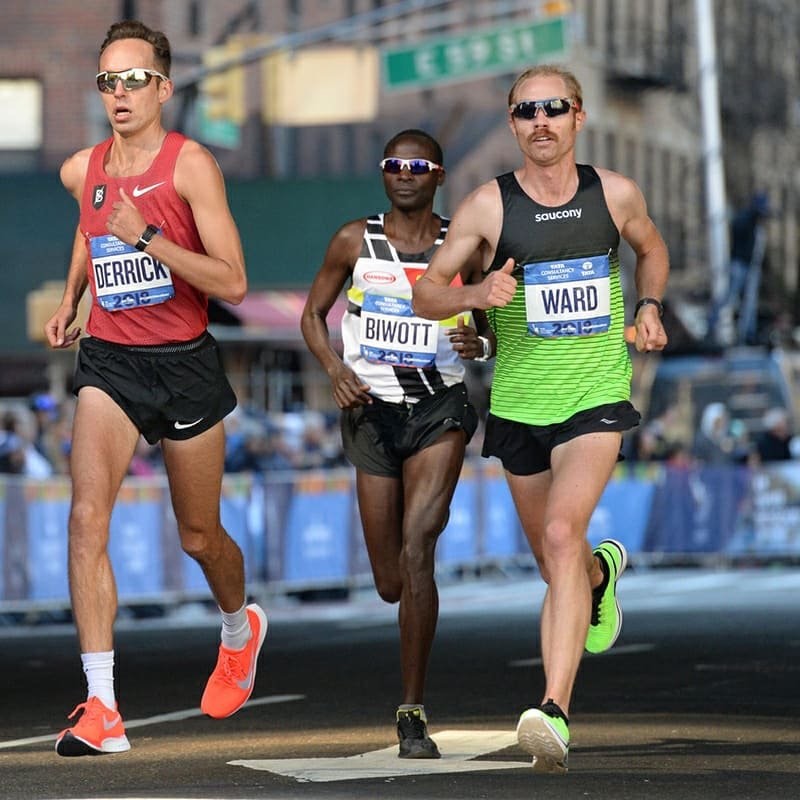
I have chosen to return to the TCS New York City Marathon ahead of the trials for the following reasons.
I have a goal of a top-three finish at a World Major Marathon (NYC, Boston, etc.) and I think this fall presents a great opportunity for me to chase that. I’m coming off my fastest marathon time in Boston last spring, and I am healthy. And I think the New York course is a great course for me.
I love New York. My family and I have had fantastic experiences there and we are giddy to come back. This course also has some amazing energy. I remember last year banking on the crowds coming off the Queensboro Bridge, but feeling carried by the crowds even as early at the 3-mile mark in Brooklyn.
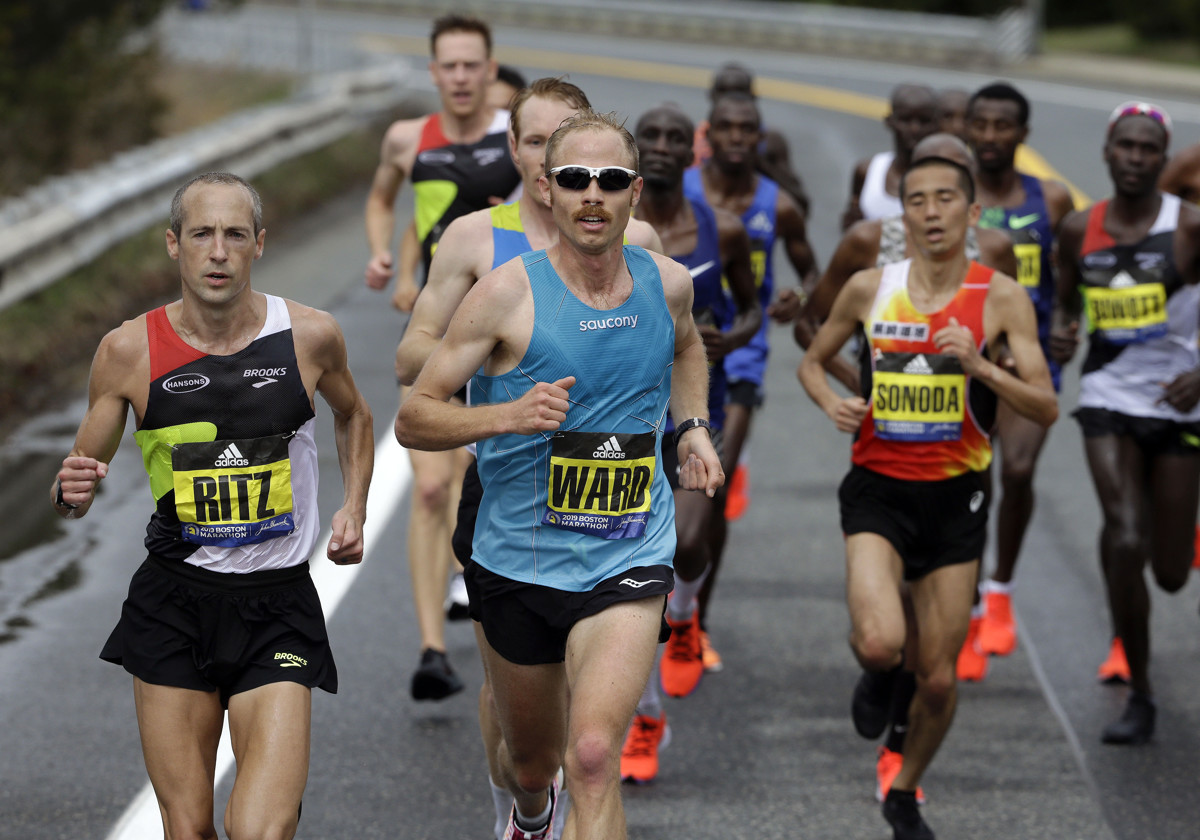
I have a family to feed. The 1-2 marathons/year that I run account for roughly half of my annual income. Coming off a good New York Marathon last fall and a great Boston present unique financial incentives to run.
I think this is going to help my trial race in February. Many athletes consider only the downside of running two marathons in four months, i.e. if you get injured that’s a tough turn-around. But there are upsides too. One is that the Atlanta trials course is hilly. Most major marathons are relatively flat, so experience on hilly courses among elite marathoners is largely in short supply.
Another compelling reason to race is to avoid burnout, which can present problem when training for one huge race so far out. Marathoners especially are known for being fit two months ahead of the trials, and then overcooked by race day. Putting a marathon on my calendar between now and Atlanta offers me a nearer focal point. Then following some forced time off after New York, there will be a healthy amount of time to train for and focus on the trials—not too much, and not too little.
I’ll see you in New York. Then Atlanta.
by Jared Ward
Login to leave a comment
TCS New York City Marathon
The first New York City Marathon, organized in 1970 by Fred Lebow and Vince Chiappetta, was held entirely in Central Park. Of 127 entrants, only 55 men finished; the sole female entrant dropped out due to illness. Winners were given inexpensive wristwatches and recycled baseball and bowling trophies. The entry fee was $1 and the total event budget...
more...Here is why the USATF reopened the bids for the U.S. 2020 Olympic Trials
by Ken Stone
Login to leave a comment
Tracktown USA hopes to be selected to host the USATF 2020 Olympic Trails
Login to leave a comment


